The Pastoruri Glacier Road.
It’s over three weeks since I last posted on this blog and we’ve covered a lot of distance through the Huayhuash and Central Cordilleras in that time. Apologies for the lack of posts, but for our Huayhuash adventure we needed to lighten our loads and left a bunch of stuff in Huaraz, to be bought to us by a visiting film crew down the road.
Yep you read that right. A film/photography crew! Between the towns of Huancavelica and Paras we had the team with us for four days, documenting our experience. It was an exciting and fun time and you’ll hear more about it later this month.
For the past four days we have been hanging out in Ayacucho. This city is a detour (4.5hrs by van) from the Peru Divide route which we are currently following but we needed internet, which is extremely scarce in the Central Cordillera villages, while I worked on a feature for the new publication, the Bike Packing Journal.
It’s been great to have a break from the high altitude and consistently sub-zero nights of the mountains and eat some better food. Ayacucho’s a really pleasant city with a compact and historic centre, a beautiful plaza and lots of good restaurants. In many ways the ride since Huaraz has slowly ground us down, we’ve lost weight, the skin on our hands has cracked, it’s been hard to find nutritious food and we were getting a little road weary. The near-daily 4000-5000m high passes and long, long climbs have been a challenge, but at the same time we’ve gradually reached a new level of acclimatisation: 3500m is practically sea level for us now, and we’re riding more steadily over 4500m. It feels great.
The terrain we’ve ridden, the people we’ve met and the remote communities we’ve seen in the past weeks have all been extremely memorable. Peru’s mountains are like no other place we’ve ridden, with the landscape flowing constantly from wide open pampa, to ice laden peaks to barren rocky canyons and everything in between. It’s a geologist’s paradise, with untold rock types and colourful mineral belts. Crossing each hard-won pass reveals a new landscape entirely and each day on the road there is something to look forward to.
We’ll bring you right up to date with the ride in coming weeks. For now, here’s just the first two and a half day’s riding from Huaraz to the mining town of Huallanca via the Pastoruri Glacier Road. This amazing road traverses the southern end of the Cordillera Blanca and is the southern-most of the four drivable roads that cross the range. It traverses a couple of passes between 4800–4900m, is all dirt, and apart from a flurry of mid-morning tourist traffic to the glacier is practically deserted. There’s no towns, no infrastructure and the road takes you past many high peaks.
You’ll see the diversity of Peru I’ve been talking about in the following images, and from just a relatively short section of riding.
A fairly typical scene along the highway on our way out of Huaraz. These poor sheep had just been roughly offloaded from the roof of the van. It’s not uncommon to see live chickens strapped on up there too. We’ve even seen llamas jammed into the boots of station wagons.
We followed the valley of the Callejon de Huaylas south from Huaraz before turning east onto the Pastoruri glacier road and heading for the entrance to Huascaran National Park. Quickly we left the truck traffic and collectivos behind and headed into alpine grasslands.
There’s a monitored park entry point a few kilometres in from the highway and we spent the night there, sheltered by the buildings. The resident ranger invited us into his cocina to cook dinner and we spent a good couple of hours chatting with him over cups of coca tea. A good opportunity for more Spanish practice, which we can’t get enough of. Given we tend to repeat the same set of phrases over the course of each day, it’s good to have more wide ranging conversations sometimes to pick up more vocabulary and improve our comprehension.
The area just past the park entrance is famous for its abundance of Puya raimondii trees. These amazing plants from the bromeliad family are native to the Peruvian and Bolivian puna and can grow up to 15 metres tall.
An amazing landscape to ride through; like dozens of sabres pointing skyward. They’re an even more amazing sight when flowering, when they turn a bright green.
We pressed on up the valley, passing small sheep and llama farming settlements, always distinctive with their drystone walls and simple dwellings of rock walls and thatch roofs.
A great rock overhang near the road has some ancient and well preserved rock art.
As we steadily gain height the mountains come closer.
Nevado Huarapasca towered in the background as we turned right onto the road leading to the Pastoruri Glacier at around 4800 metres.
The Pastorouri Glacier – famous for its dramatic retreat in the past 20 years – is a very popular day trip for sightseers from Huaraz.
Its retreat has left behind a swathe of barren landscape, tiny kettle lakes and this small terminal lake. On the other side of the lake a huge fragment, isolated by the retreat, sat alone – awaiting a future in liquid form.
Despite this menacing terminal face, the Pastoruri is not technically a glacier any more, as it’s no longer growing from wet season snow fall – its rate of ablation exceeds its accumulation. In the past 30-35 years its lost 22% of its size.
After our detour to the glacier we resumed following the road east, through a wild landscape, the road taking us right beneath steep icy faces and past stunning valleys.
We thought we’d make more distance but the landscape was a constant distraction. Late in the afternoon we made camp on a gentle saddle, just above the road. It was an exposed spot at 4840 metres – already below freezing as we set up the tent – but the views were incredible and we wanted a high camp to better acclimatise for our upcoming Cordillera Huayhuash ride.
To one side of the saddle the highest peaks of the Huayhuash – our destination – jutted above the uplifted landscape of the eastern cordillera.
And to the other side a stunning view north west along the Cordillera Blanca.
With the moon not yet risen the milky way was exceptionally clear in these high altitude skies.
A freezing morning kept us in our sleeping bags for a while as we waited for the sun to thaw camp.
But soon it broke through the layer of cloud, bringing detail to the landscape and enough warmth for us to explore our surroundings.
A layer cake of tones.
With down jackets and big gloves on we started the mostly downhill ride towards Huallanca.
But there were distractions of course. The stuff Hana is standing on is called Azorella compacta (yareta). A plant with very dense, closely growing leaves that reduce heat and water loss in a freezing environment. It can grow to be over 3000 years old.
The landscape continues to amaze as we ride onwards along the high ridges.
Vicuñas are the more elegant, almost deer-like, wild ancestors of alpacas and are related to the llama. Apparently their wool fibre is one of the finest and most valuable in the world, but they can only be shorn every three years so are impractical to farm. They’re normally quite shy and sometimes emit a high pitched bird-like whistle as we ride past. Although I didn’t realise it this one was running down the road behind me like it thought I was the same species. As I slowed down and got close to Hana it seemed to realise its error and suddenly stopped – like it felt a bit silly. We had a few moments to see it up close before it ran down the mountainside.
Eventually our amazing descent joined a quiet paved road which we followed down to Huallanca. We stopped there for the afternoon to eat, resupply and get a low sleep in before heading into the Cordillera Huayhuash the next day.
More soon!
Do you enjoy our blog content? Find it useful? We love it when people shout us a beer or contribute to our ongoing expenses!
Creating content for this site – as much as we love it – is time consuming and adds to travel costs. Every little bit helps, and your contributions motivate us to work on more bicycle travel-related content. Up coming: camera kit and photography work flow.
Thanks to Biomaxa, Revelate Designs, Kathmandu, Hope Technology and Pureflow for supporting Alaska to Argentina.

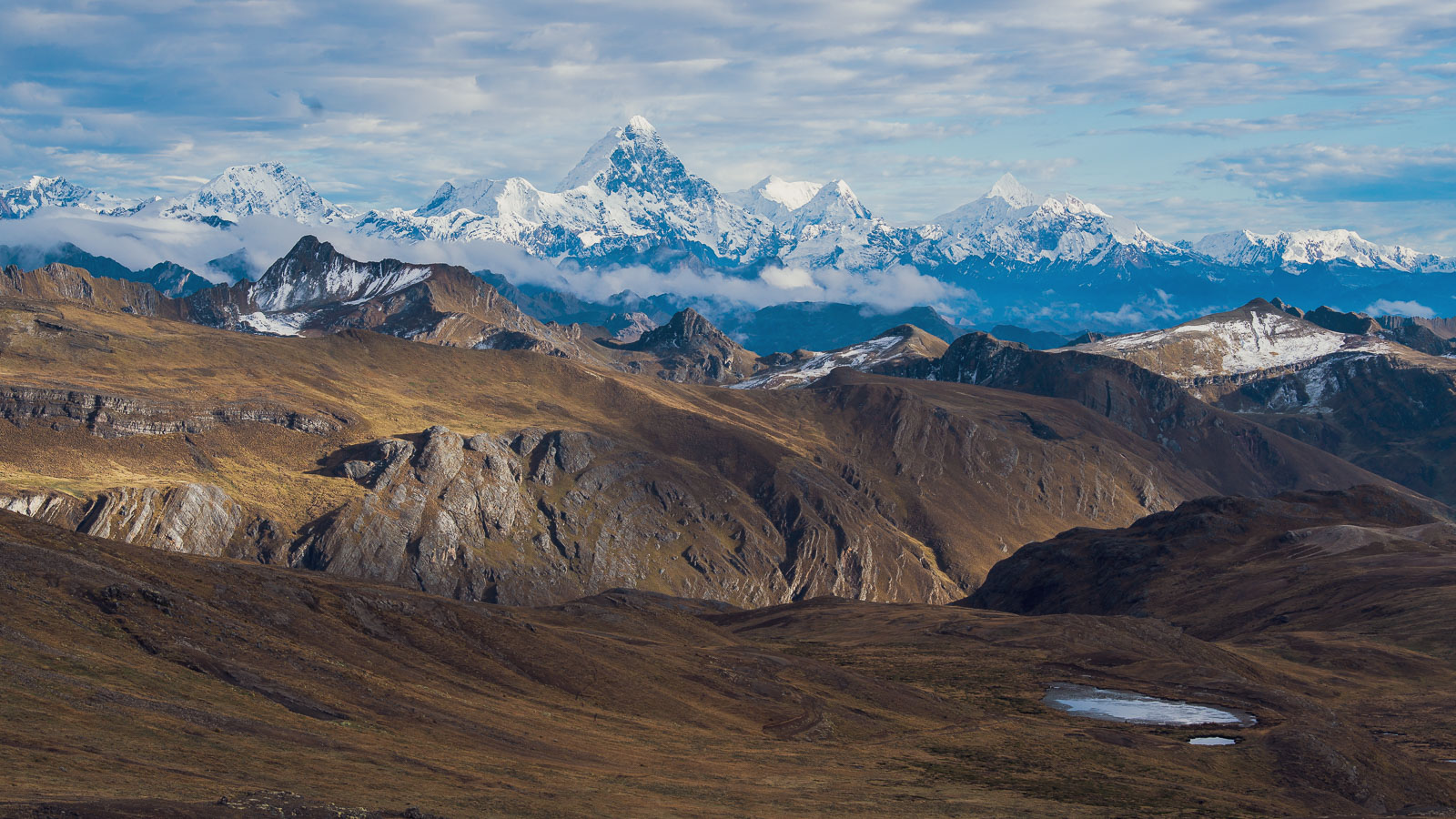
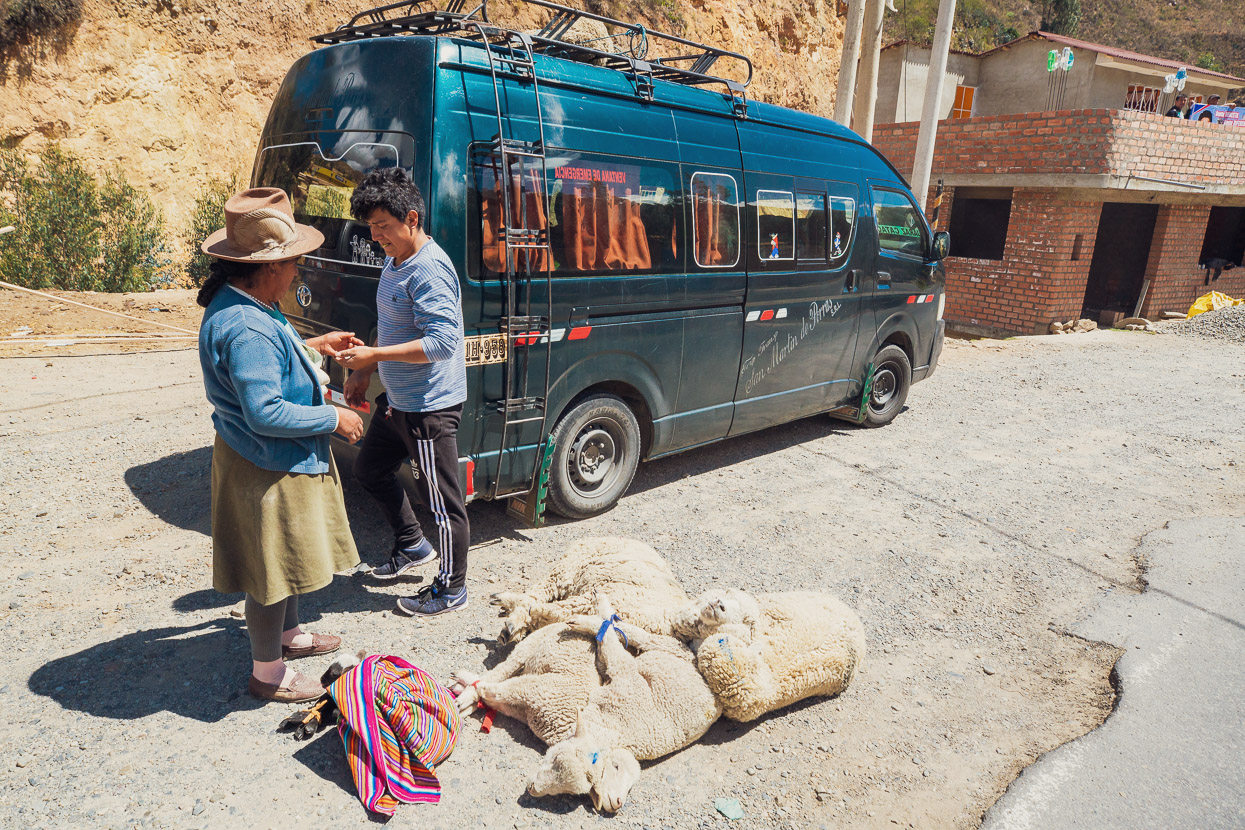
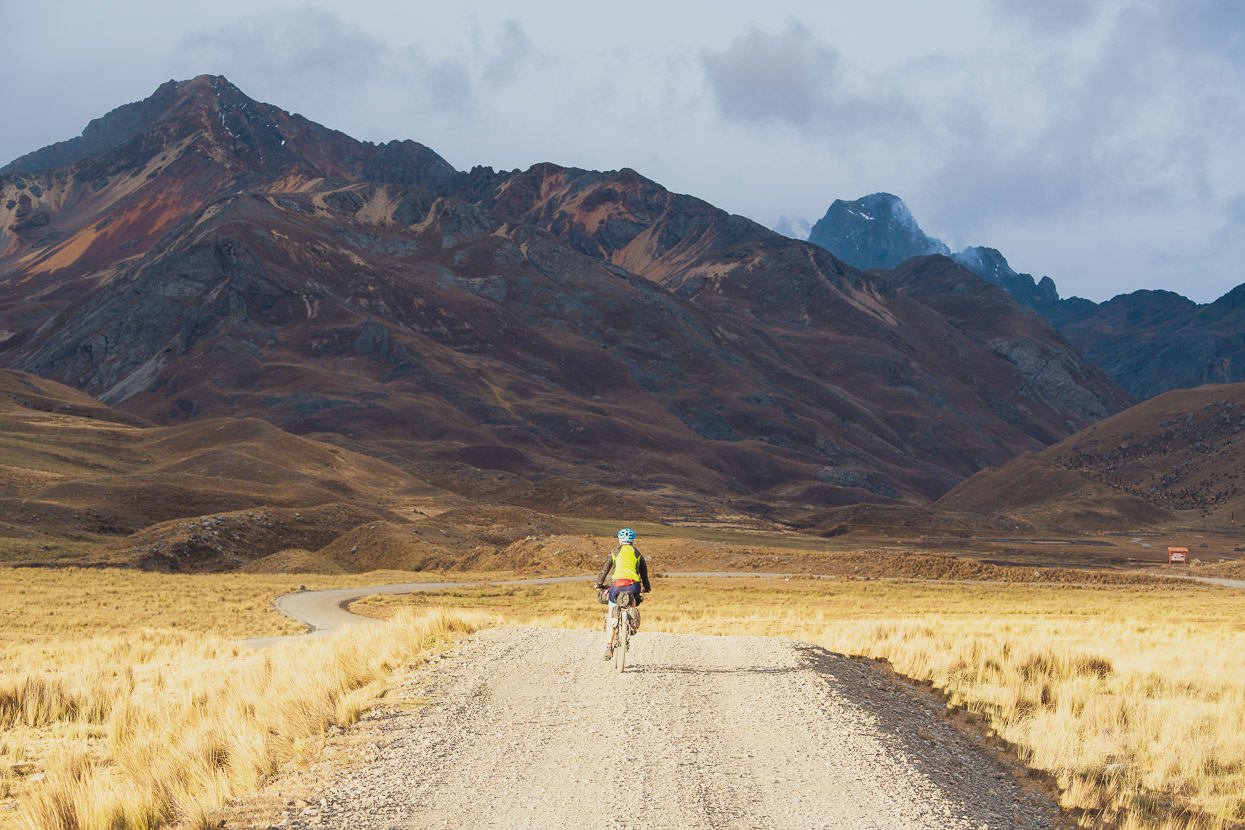
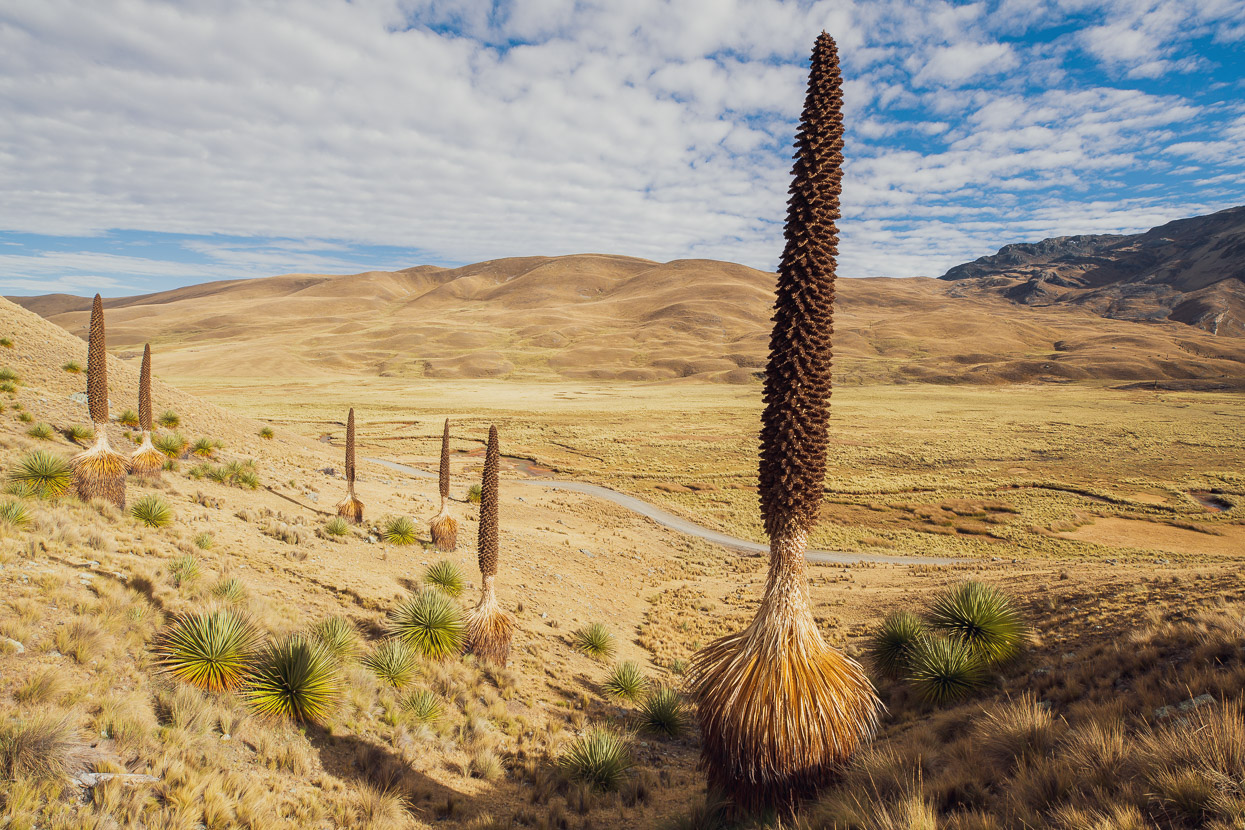
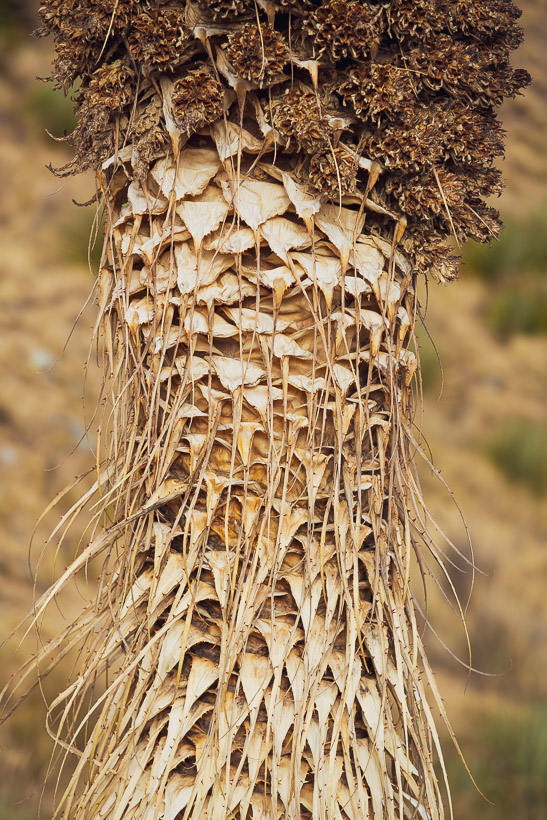
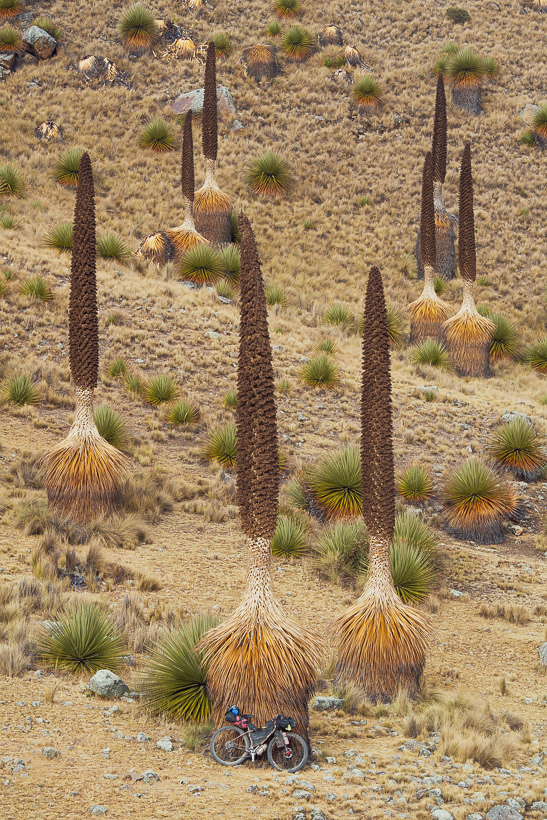
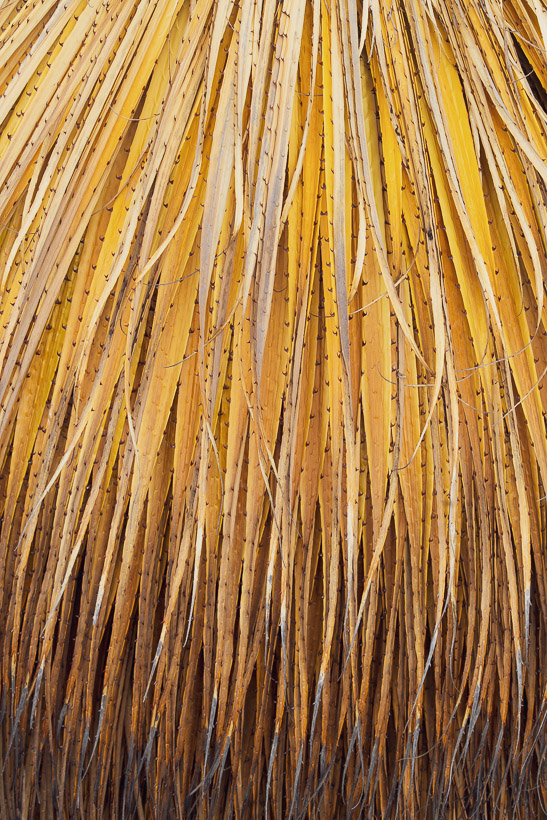
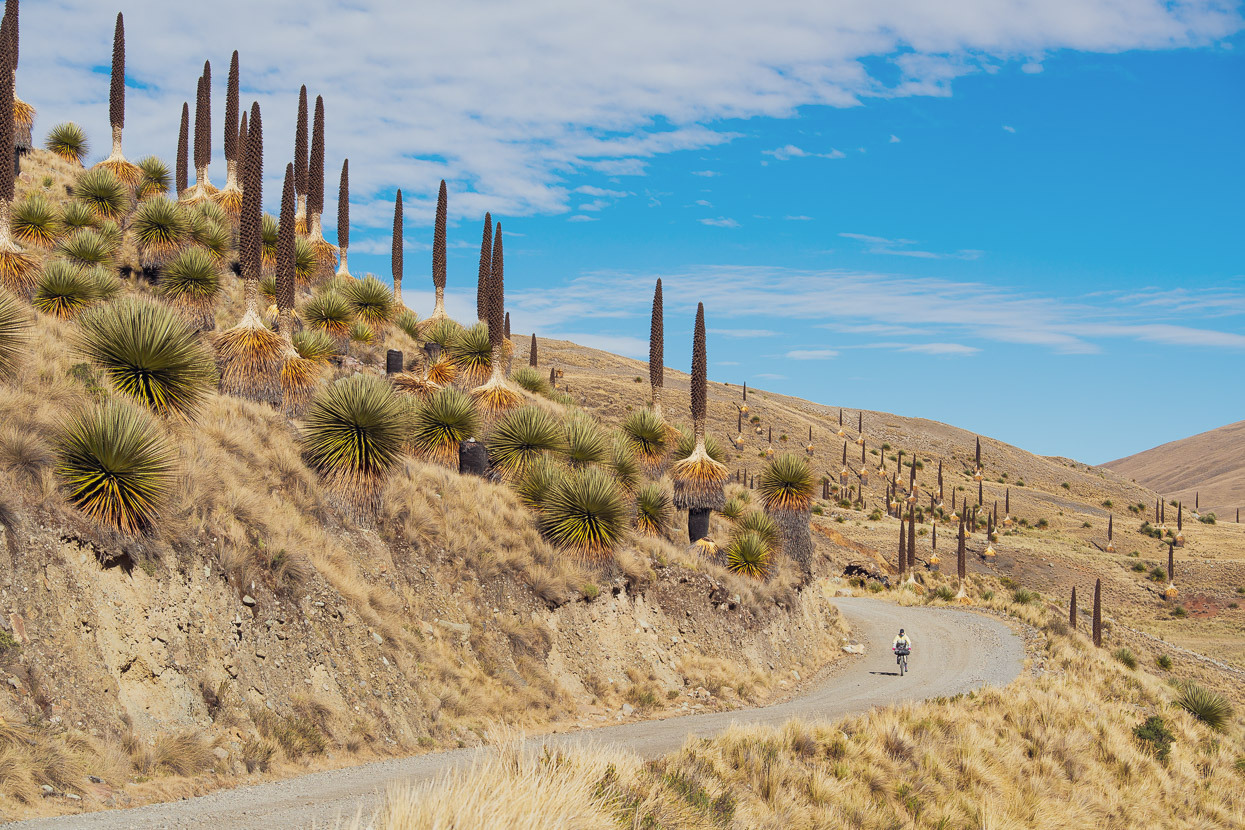
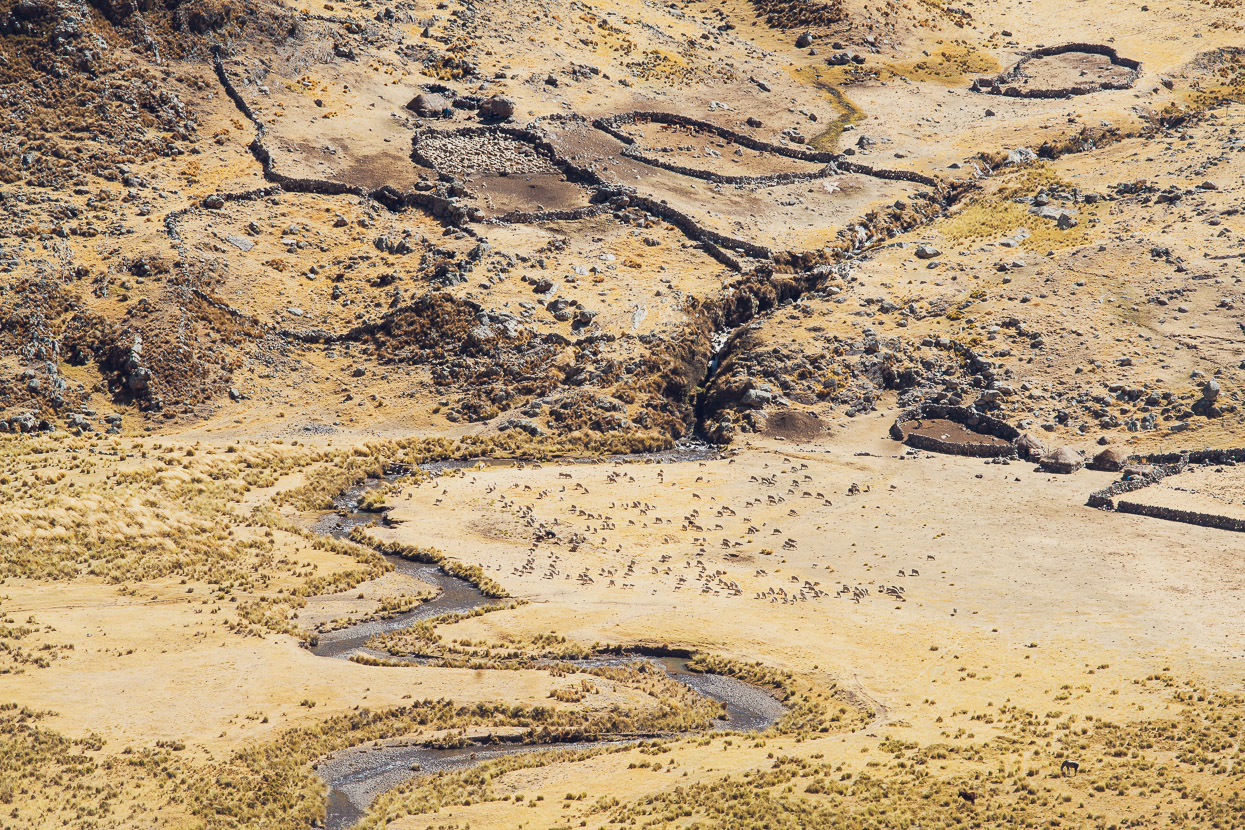
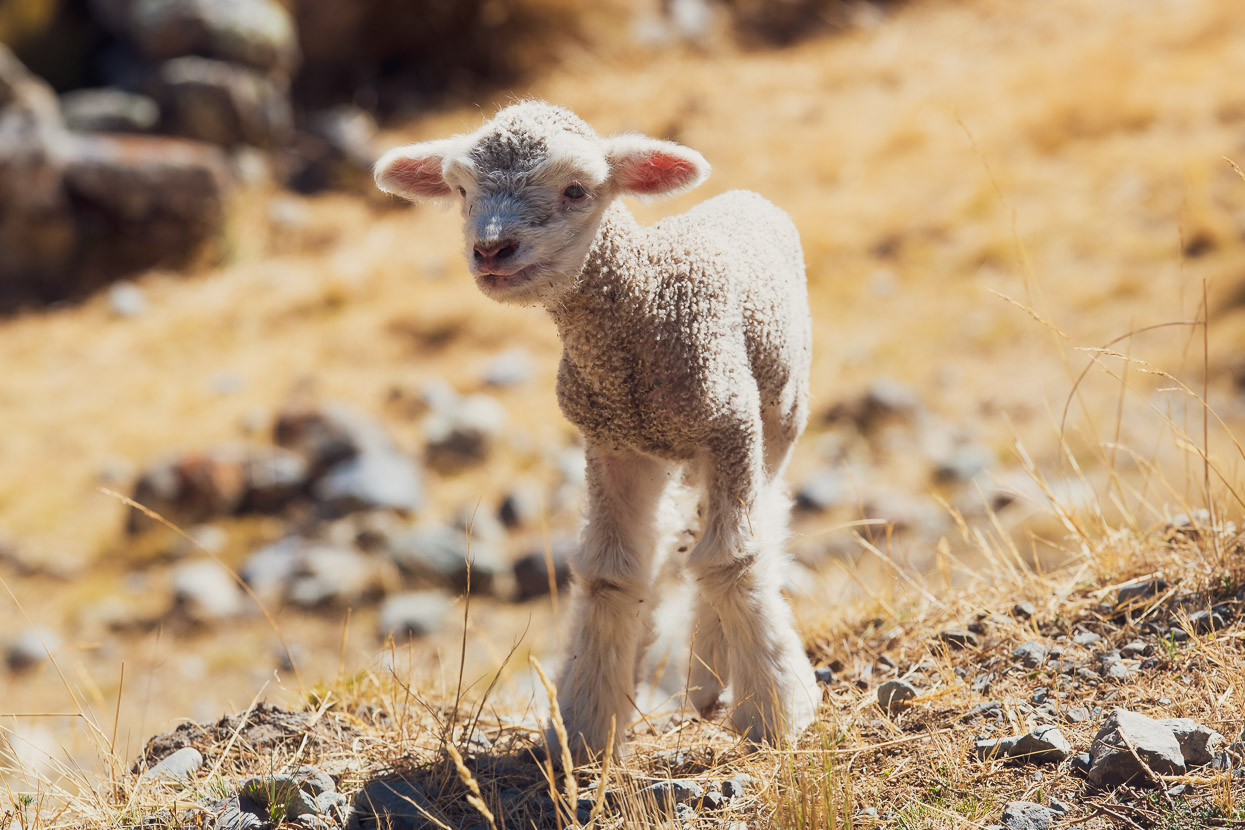
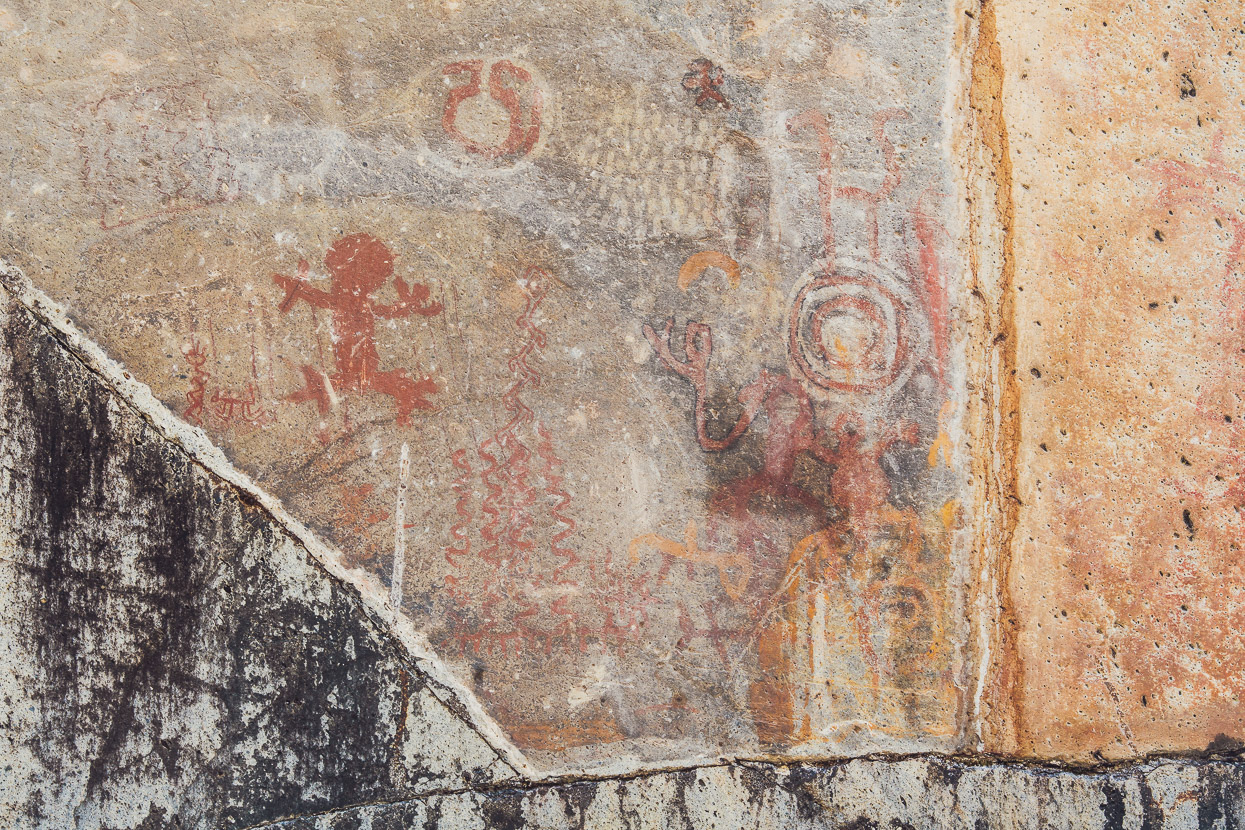
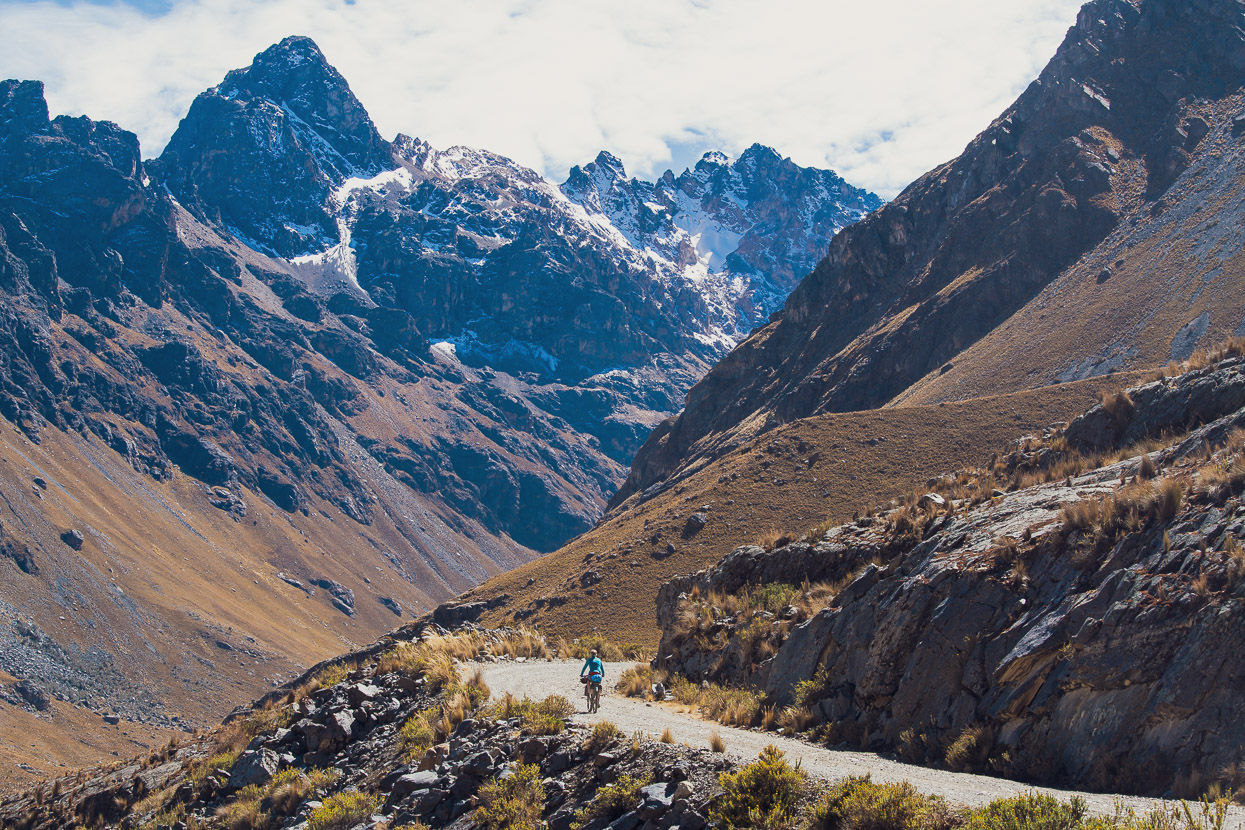
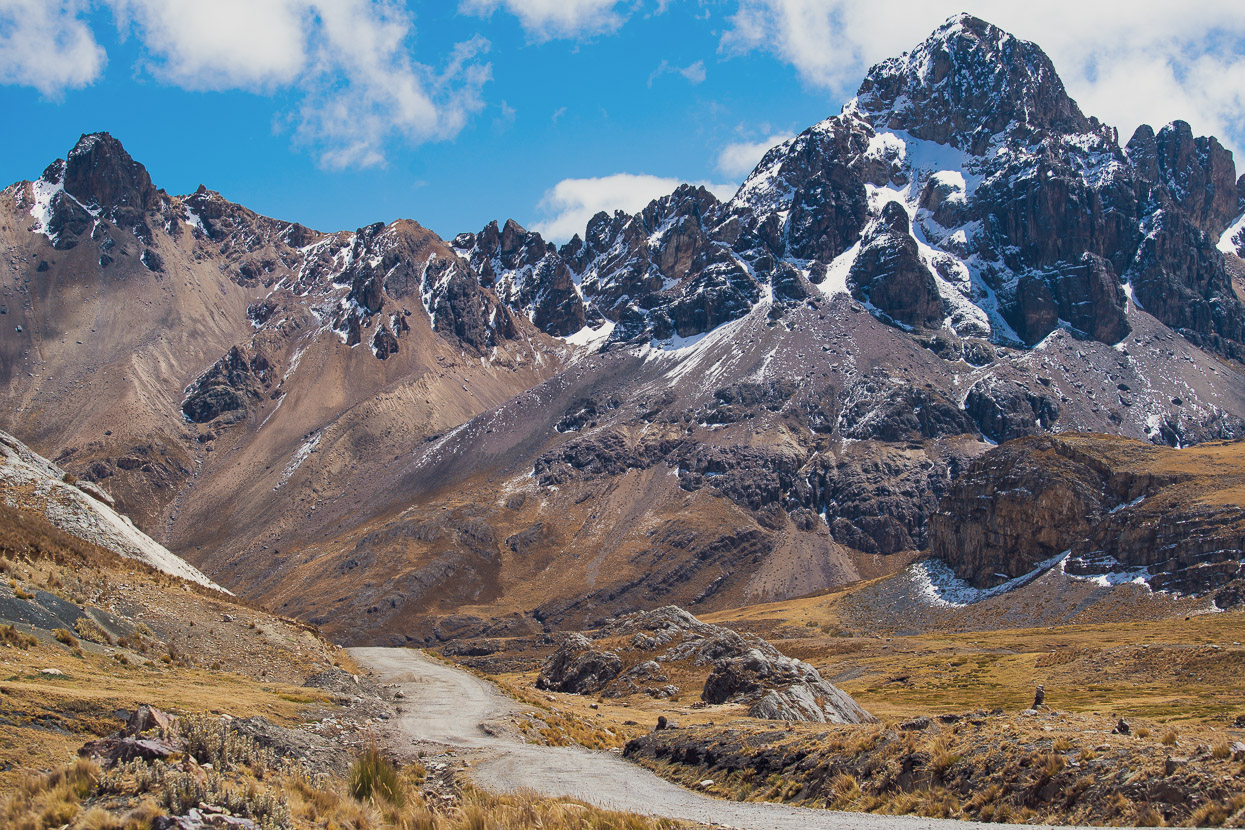
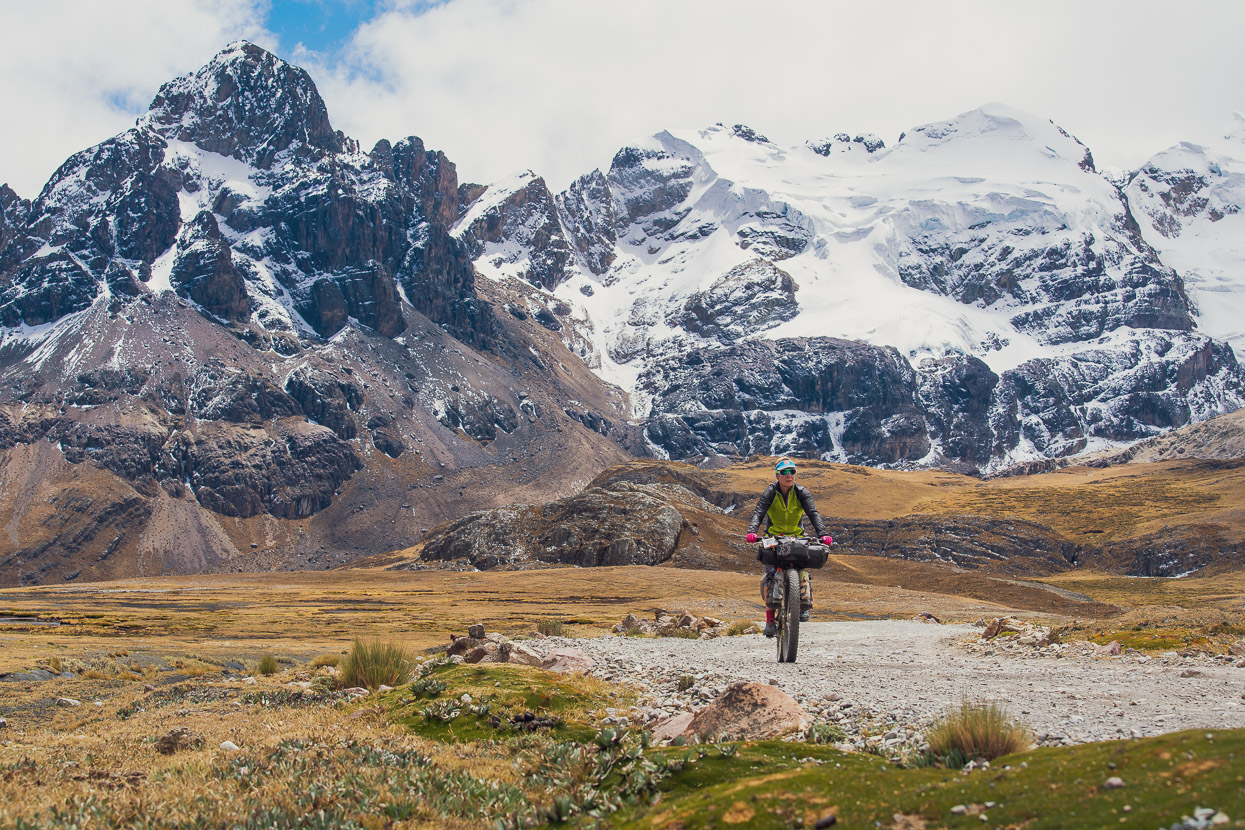
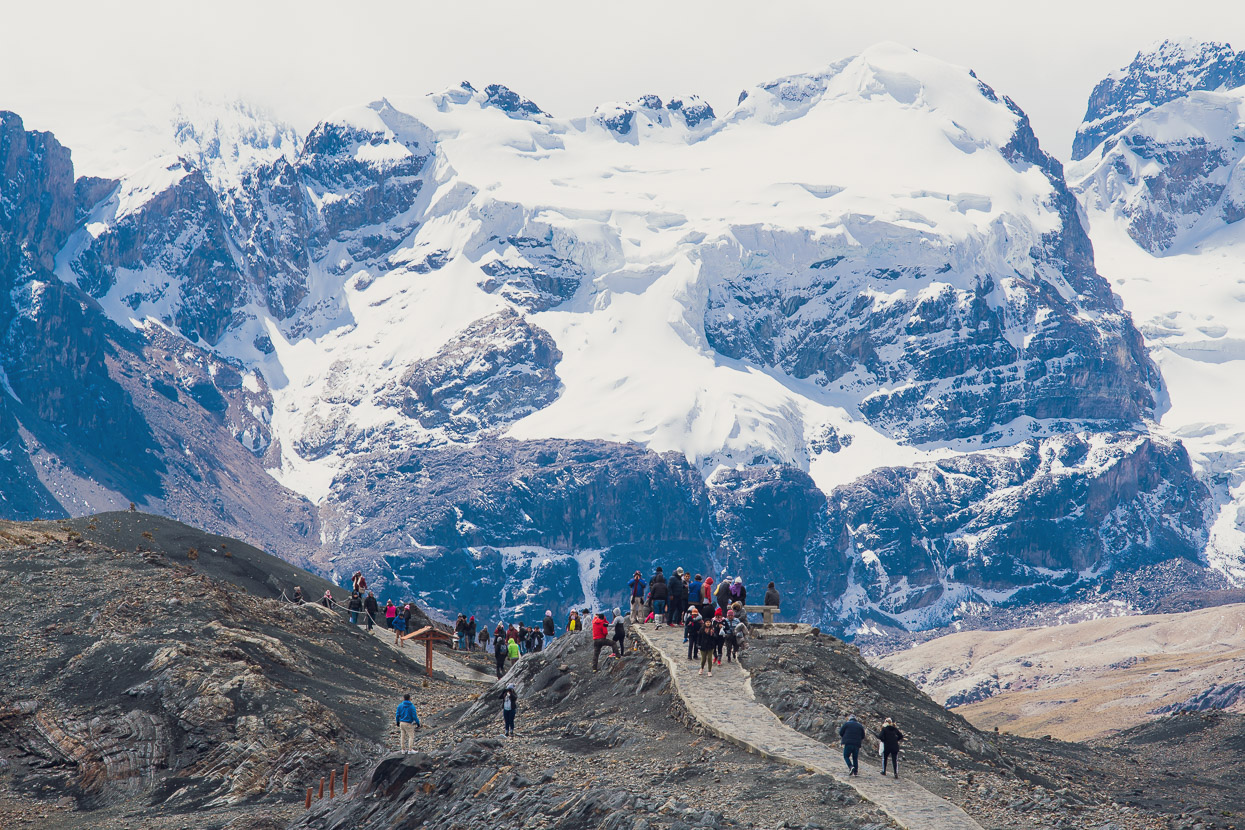
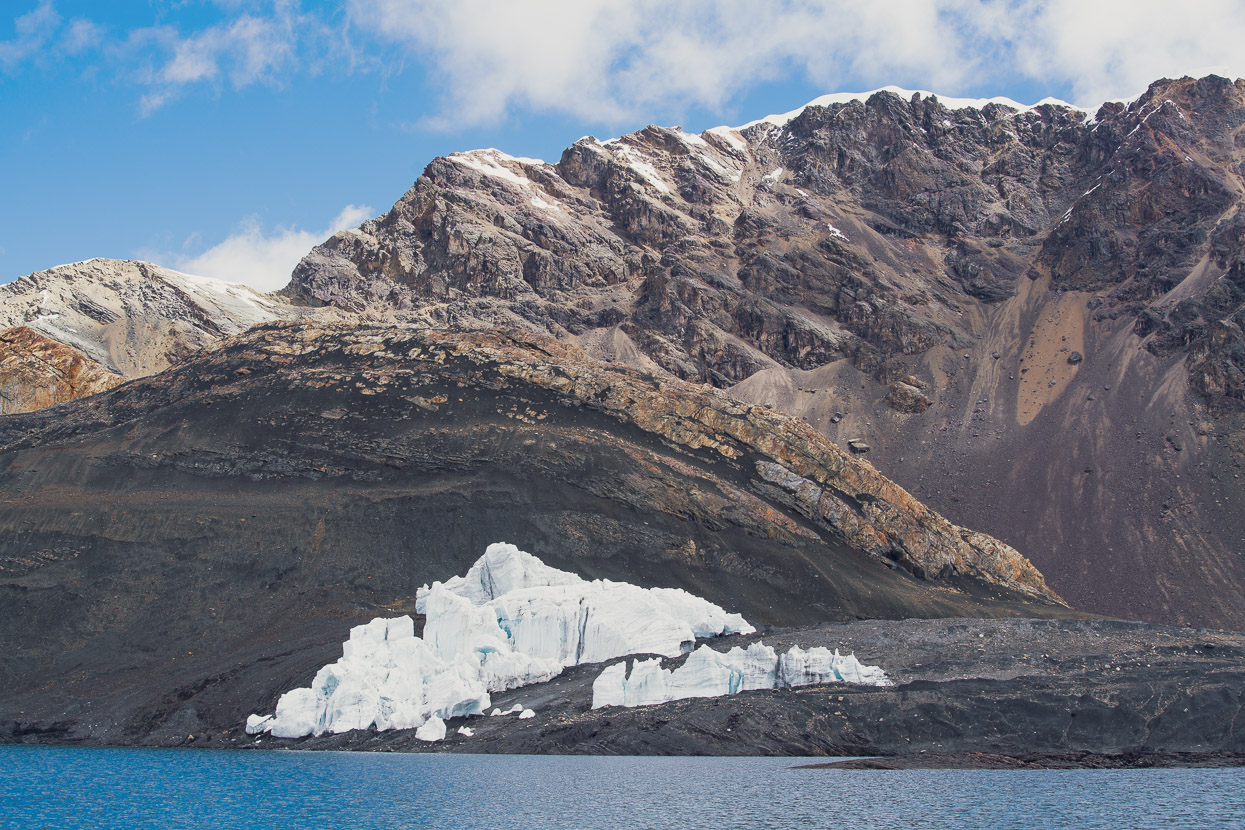
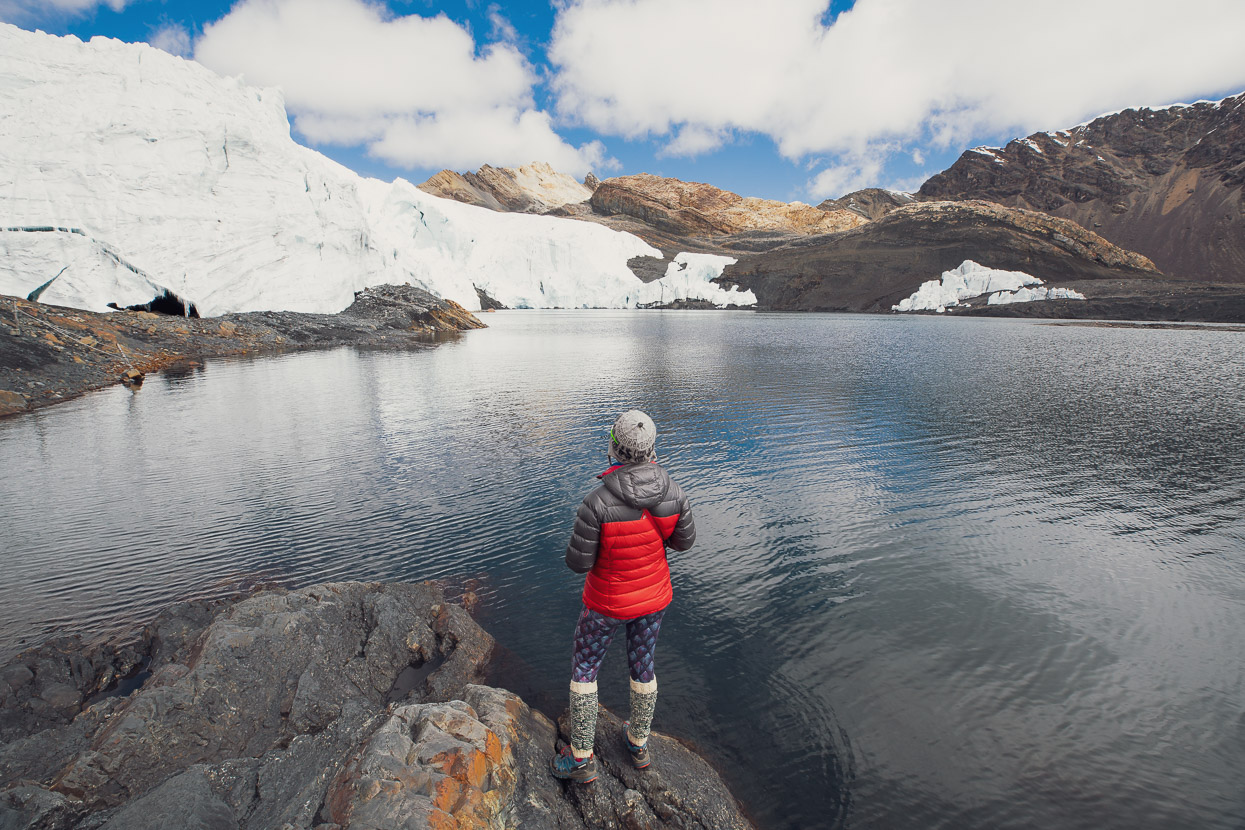
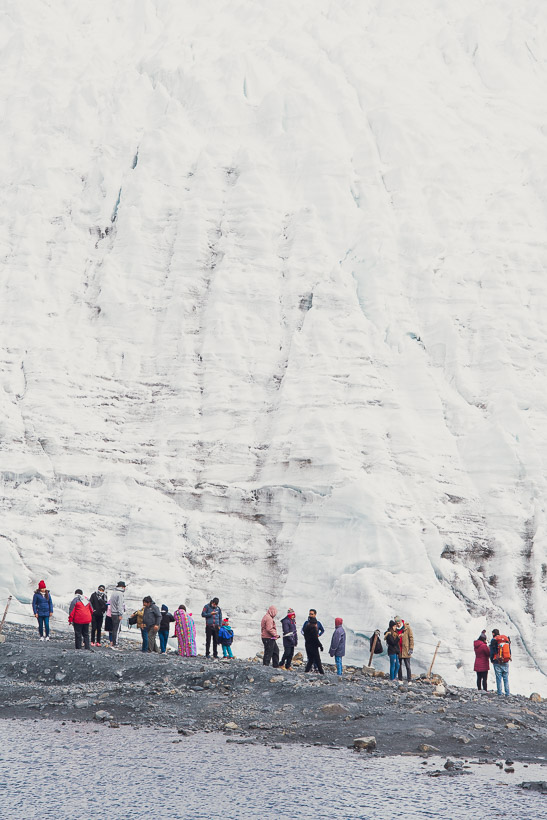
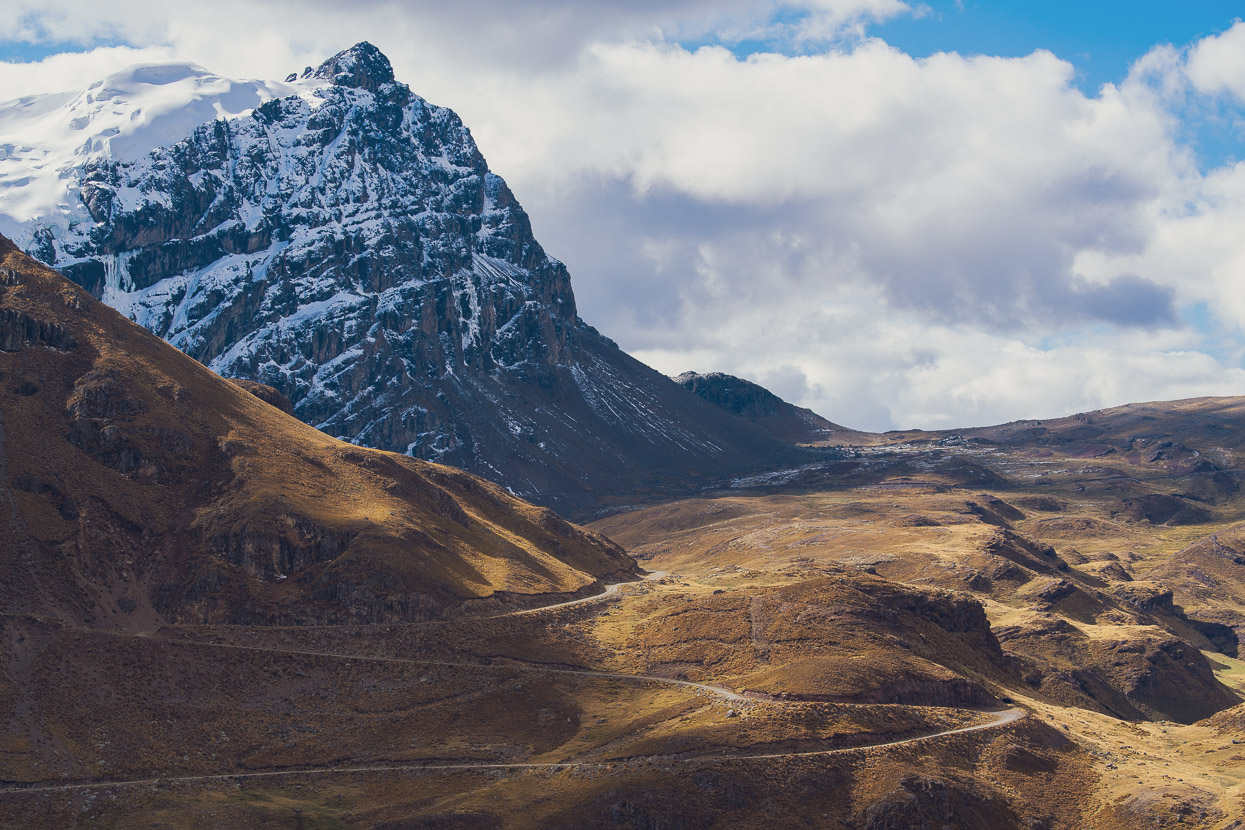
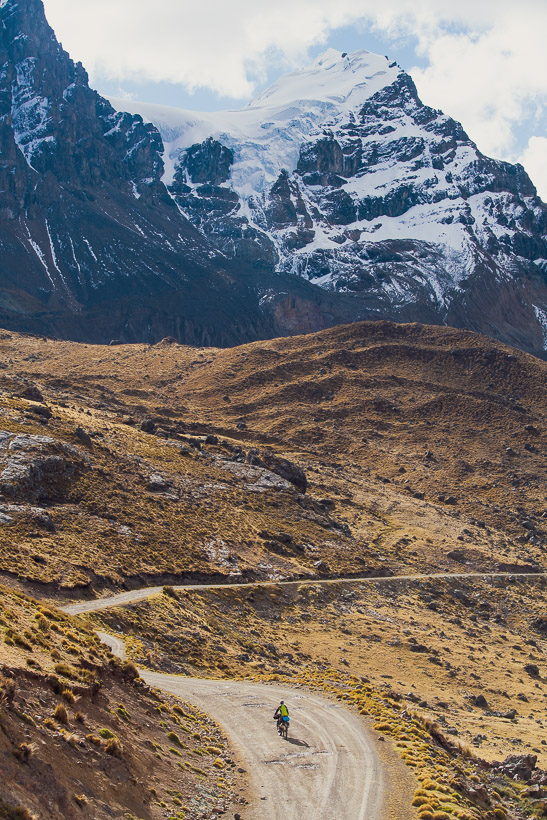
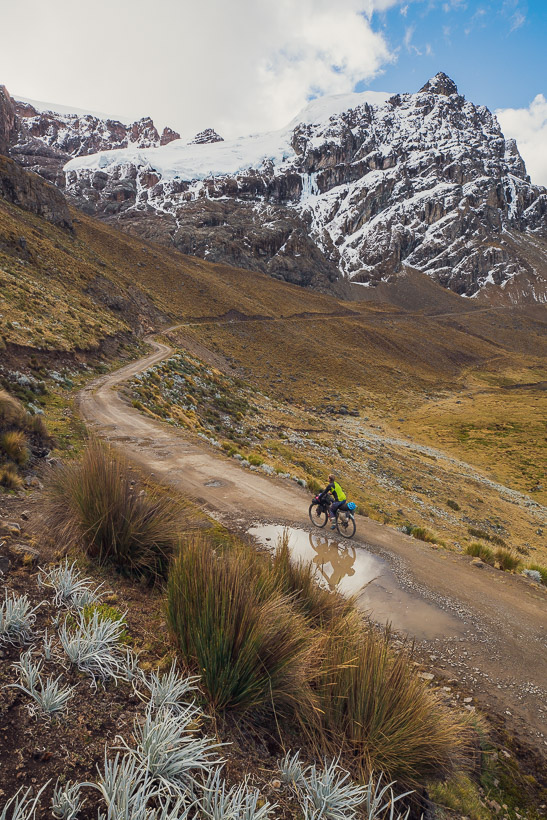
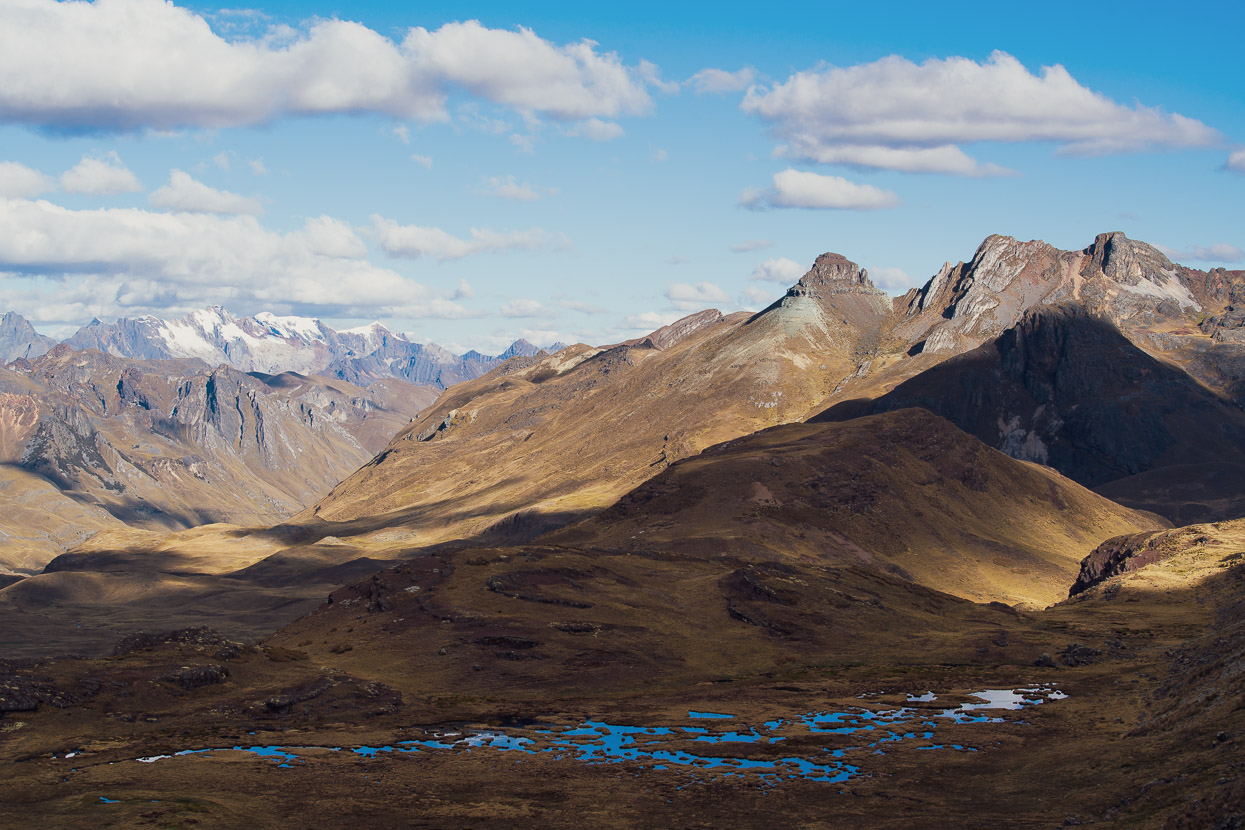
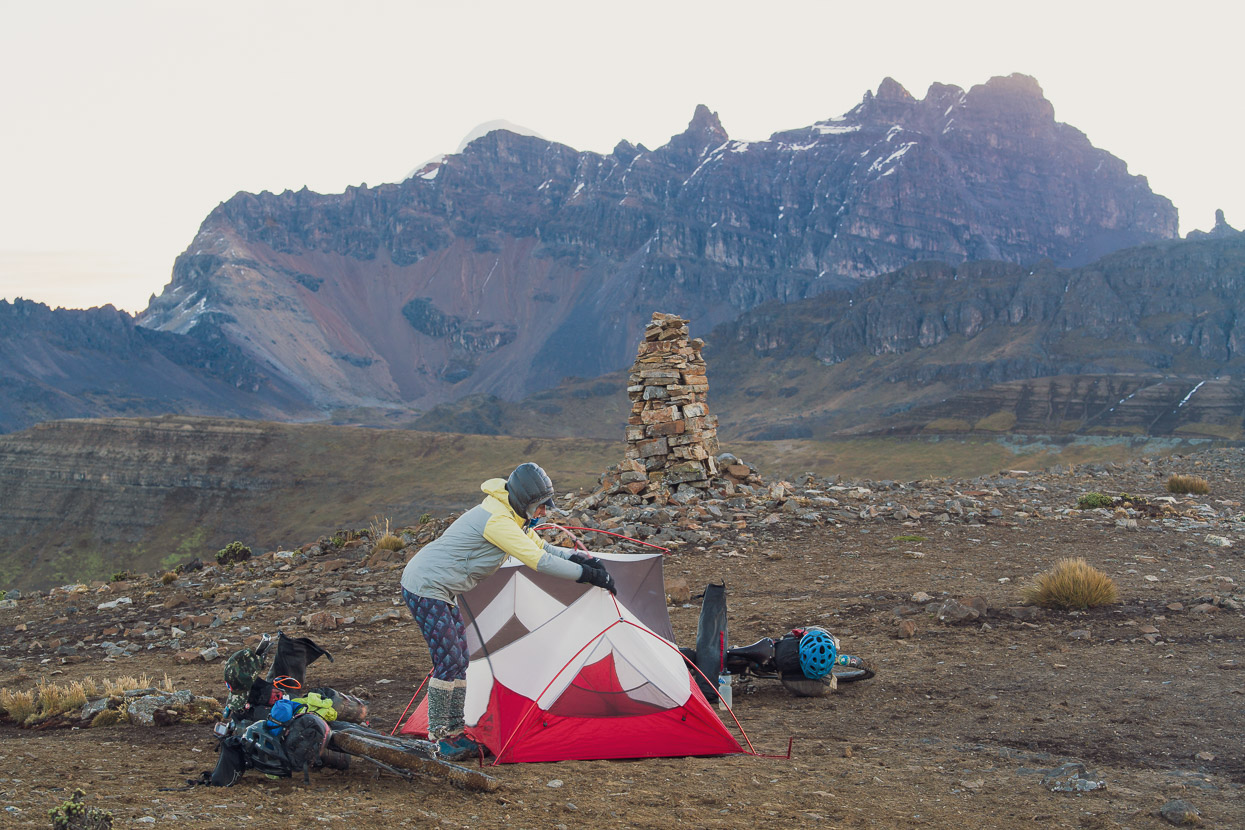
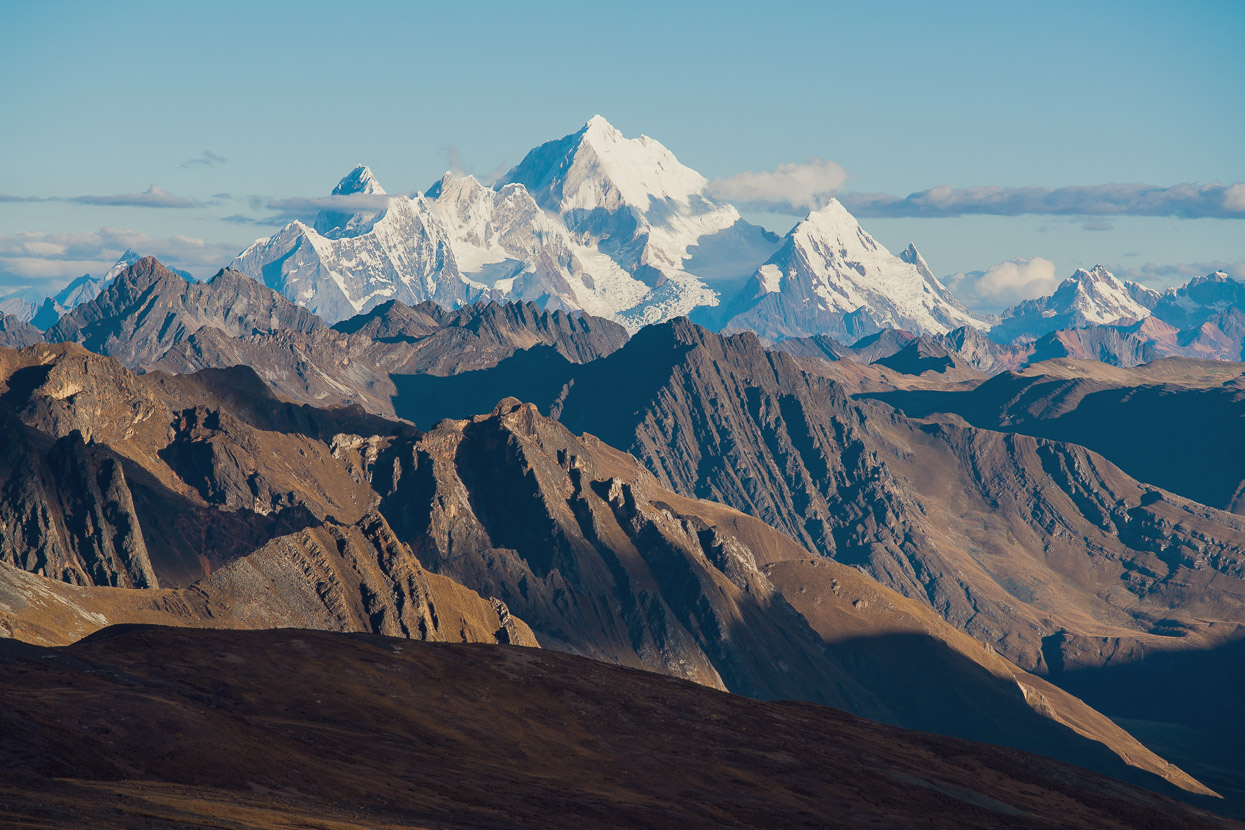
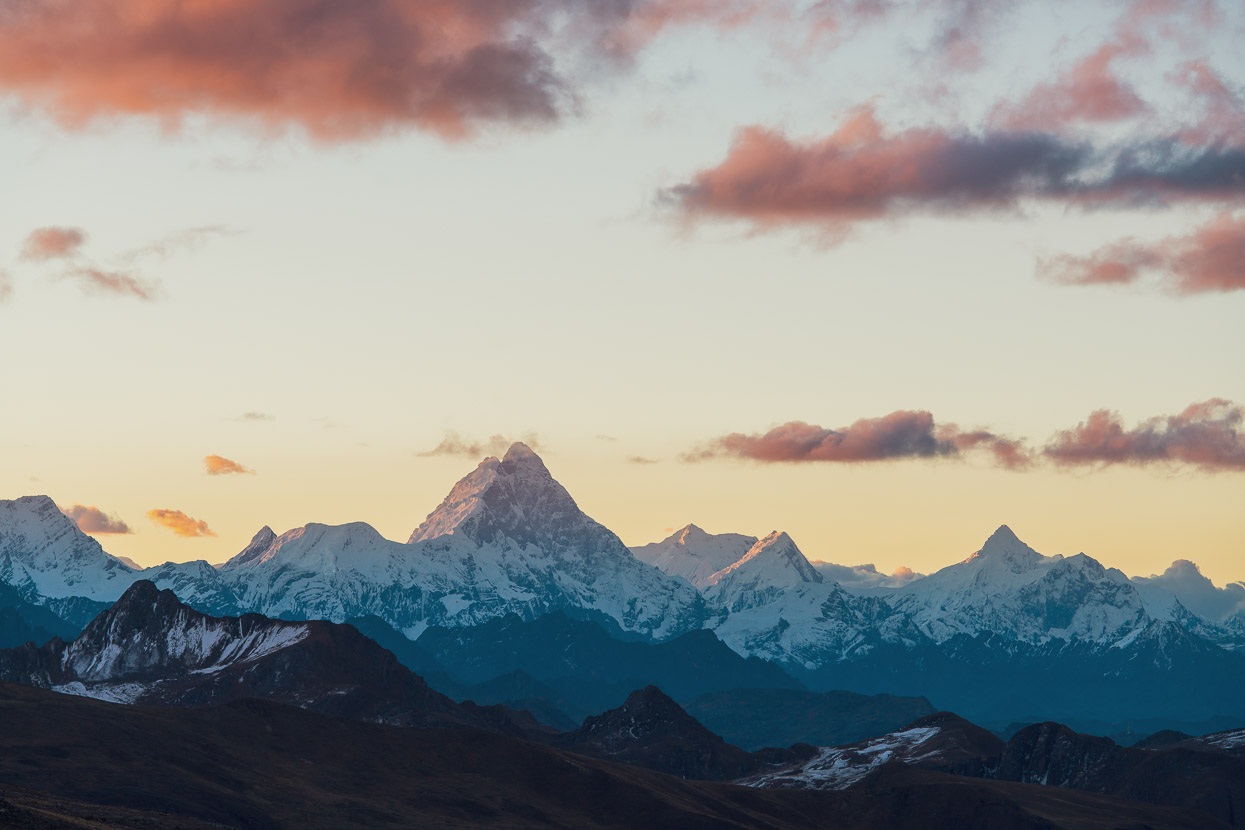
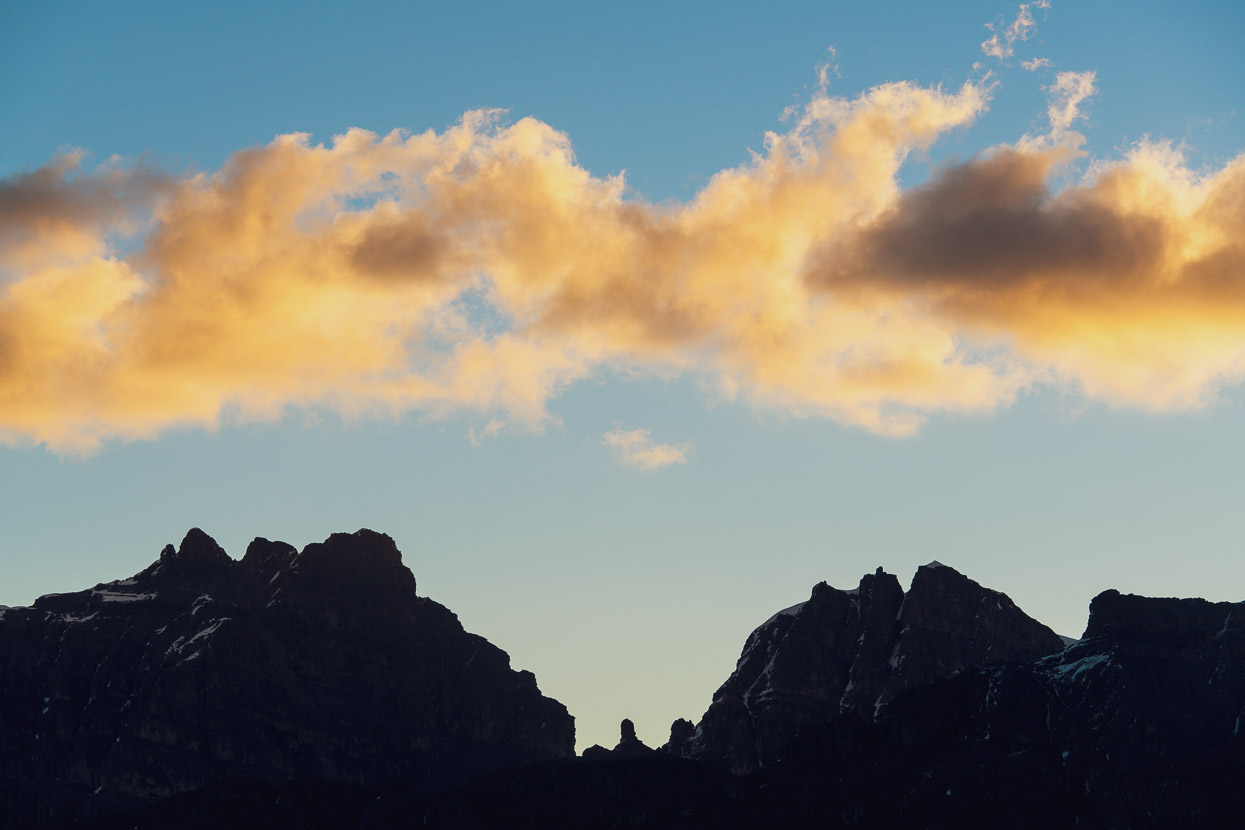
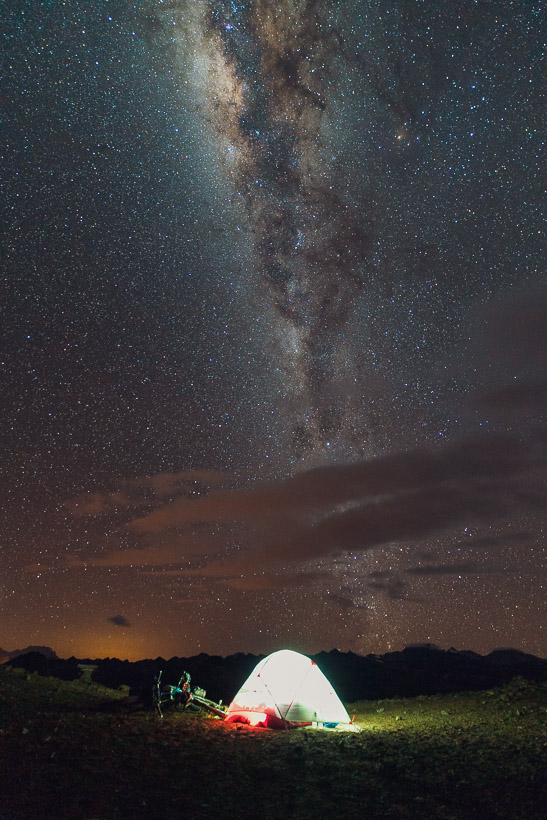
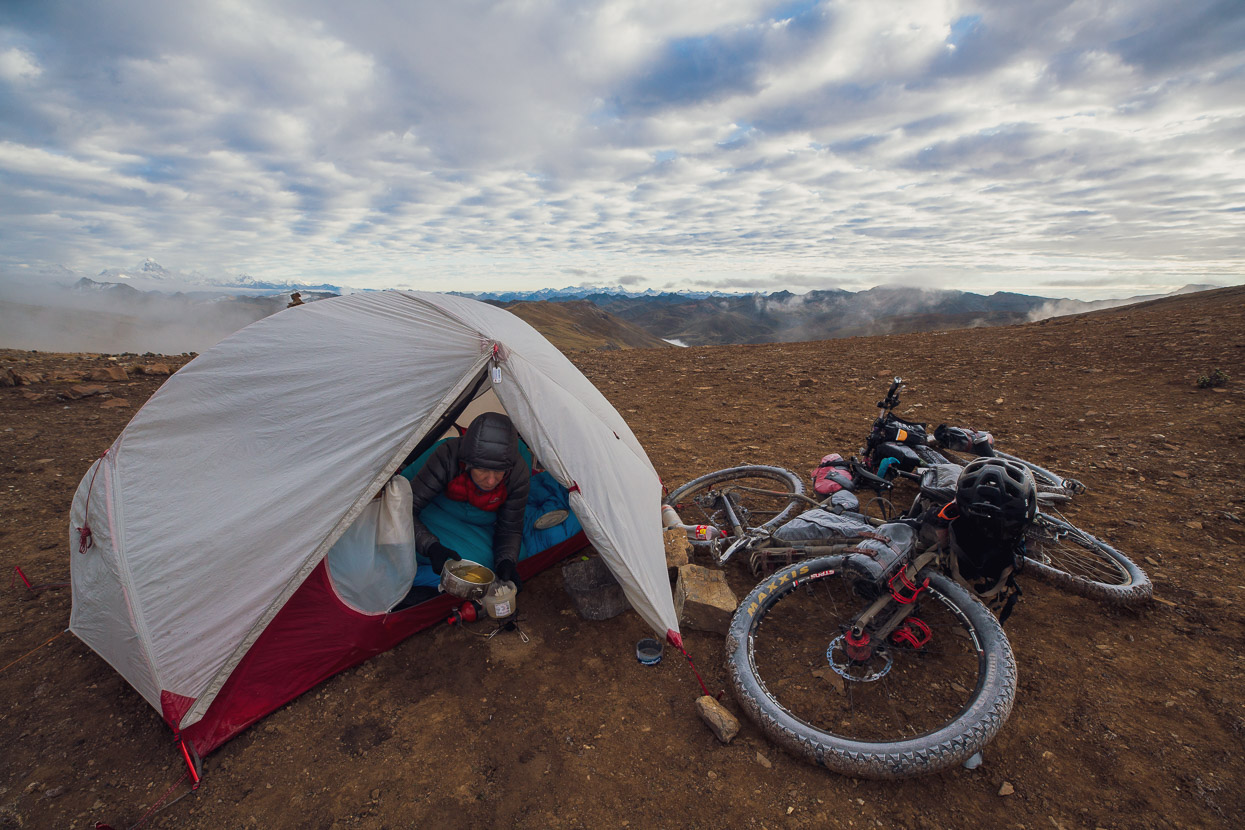
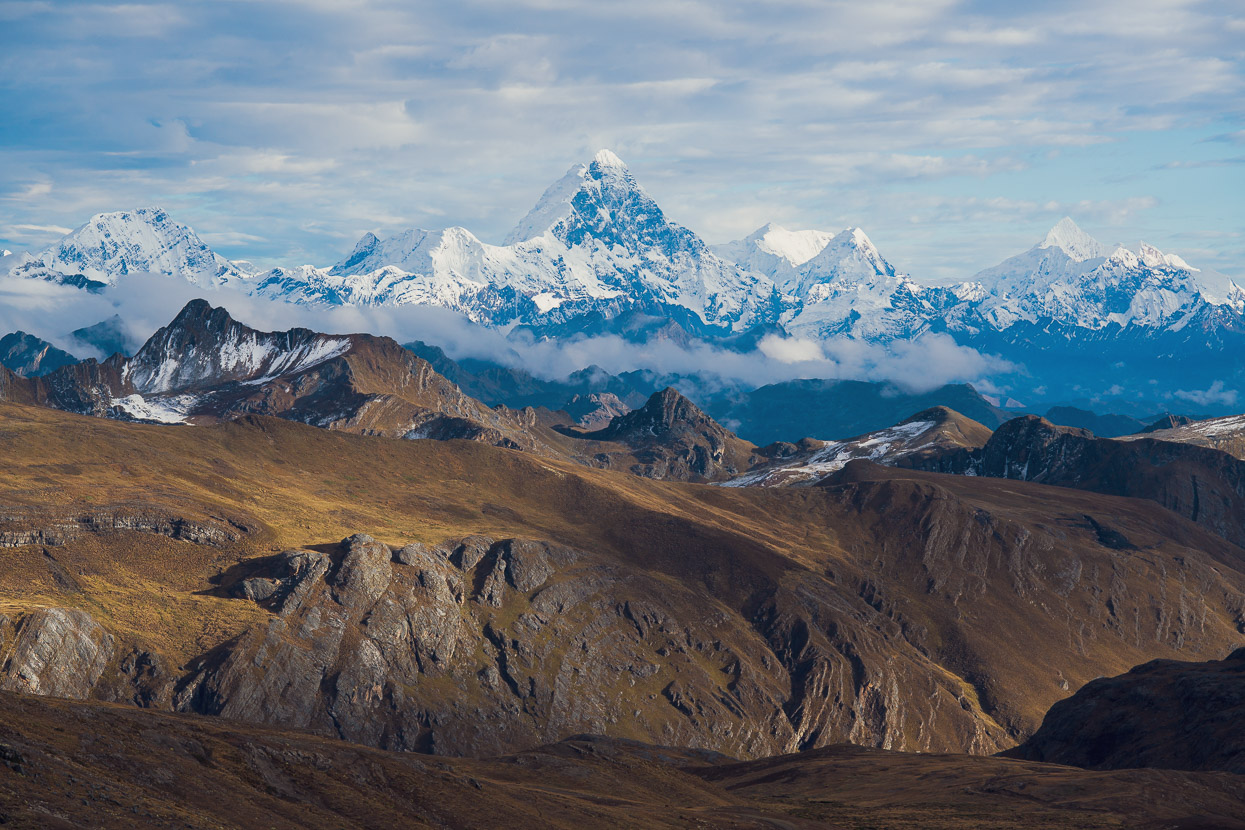
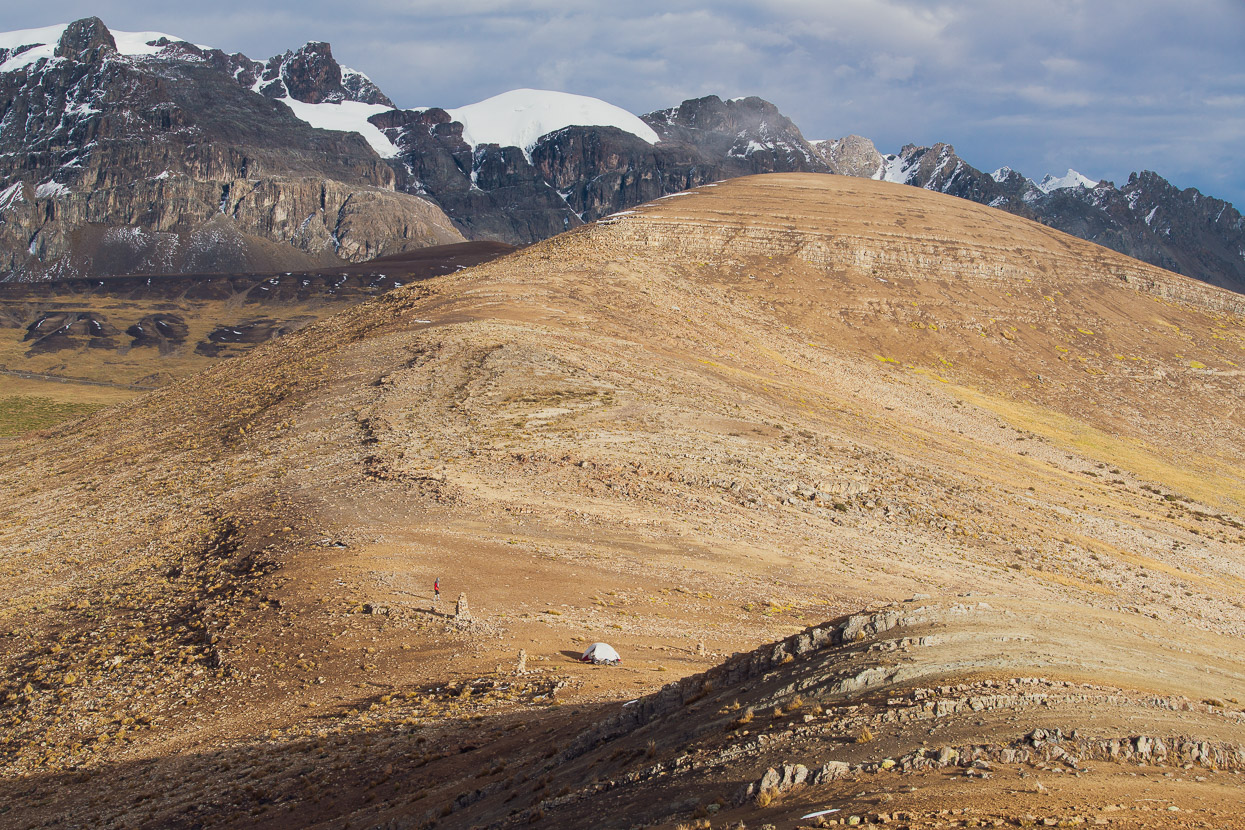
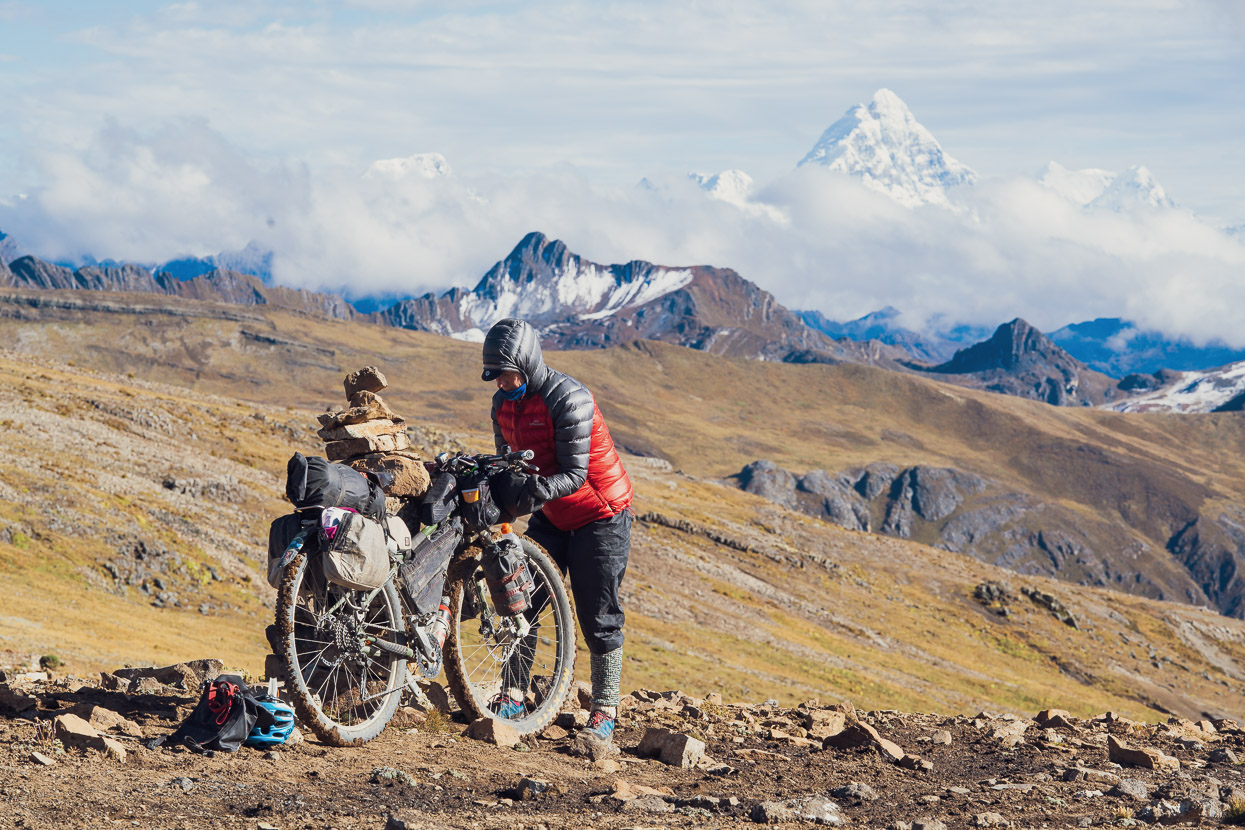
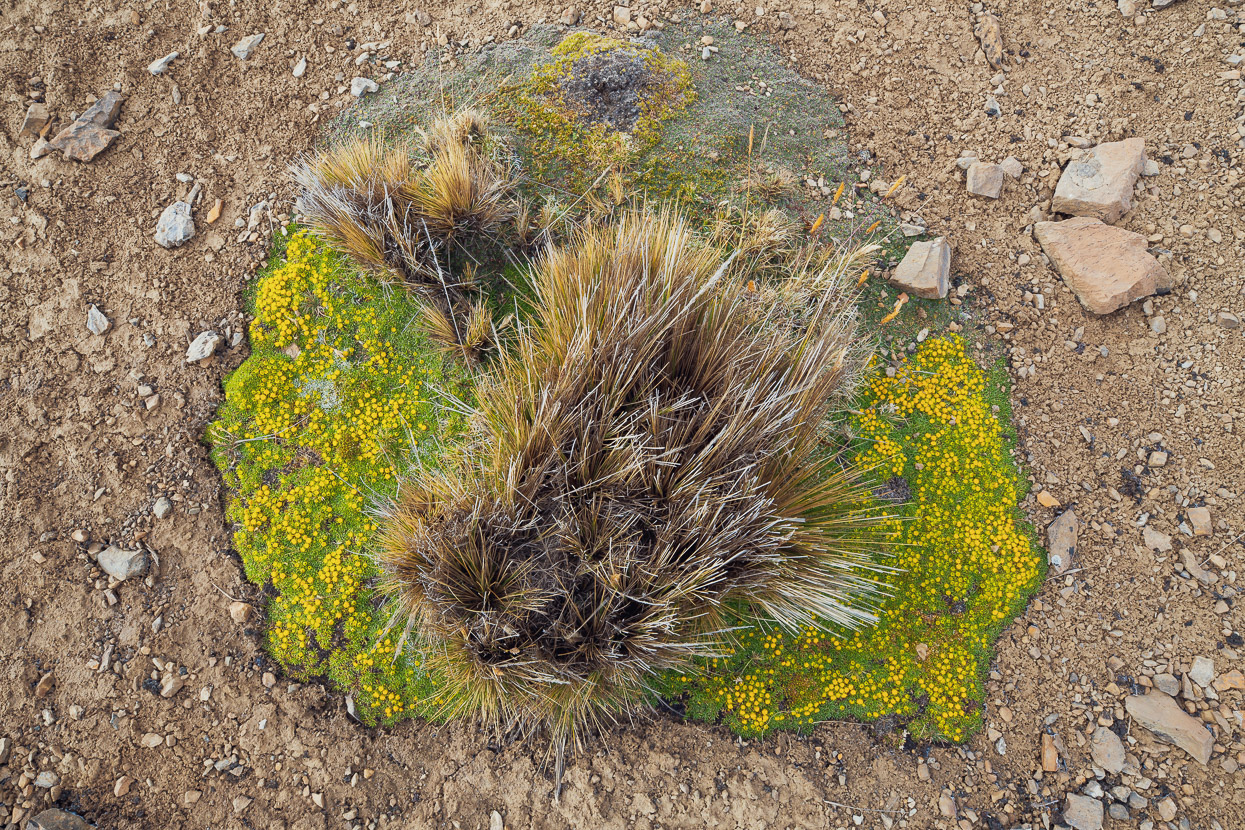
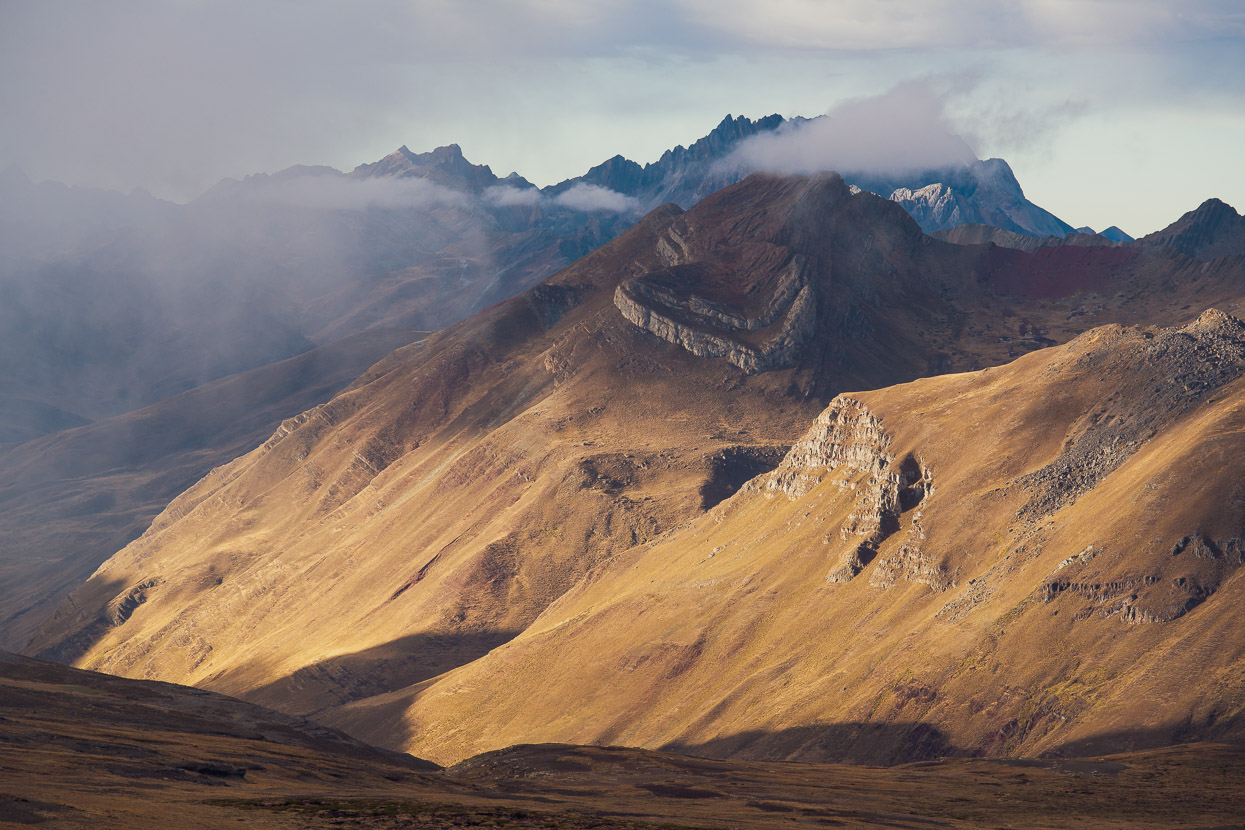
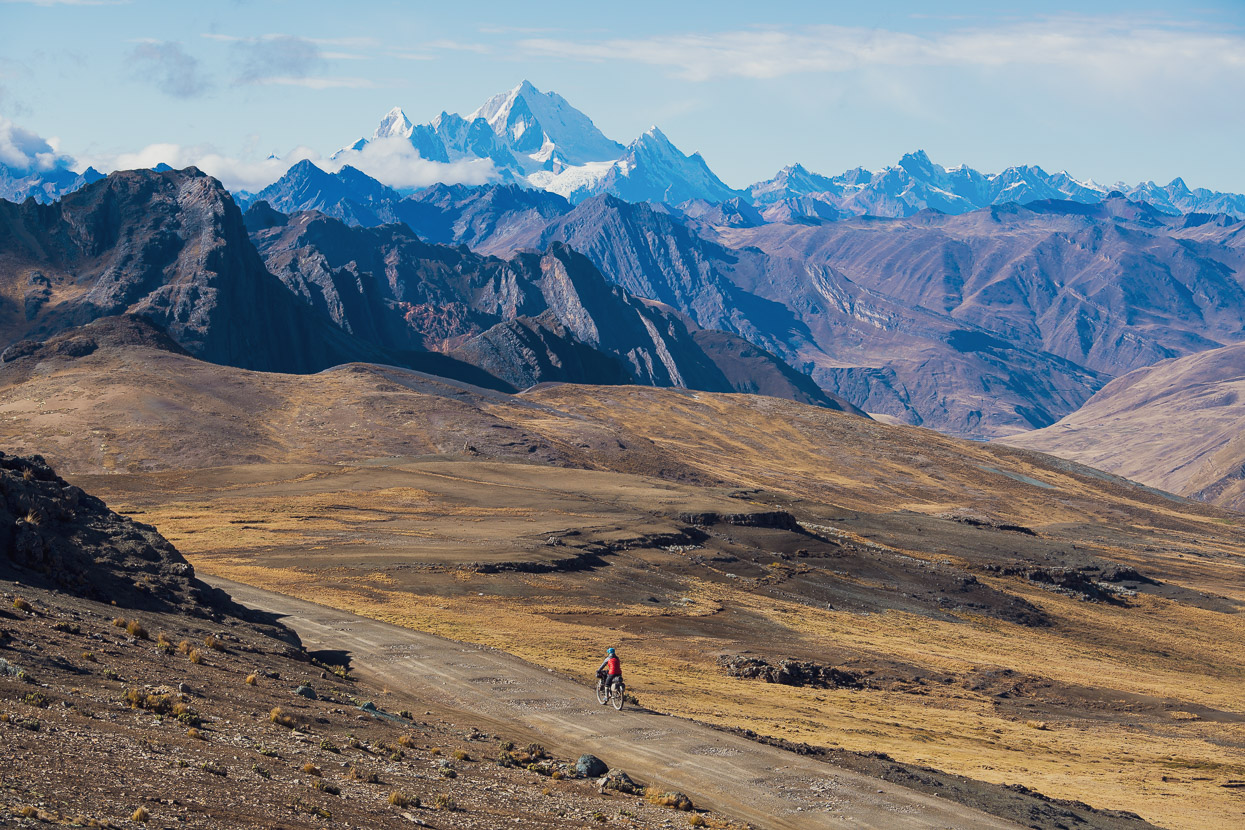
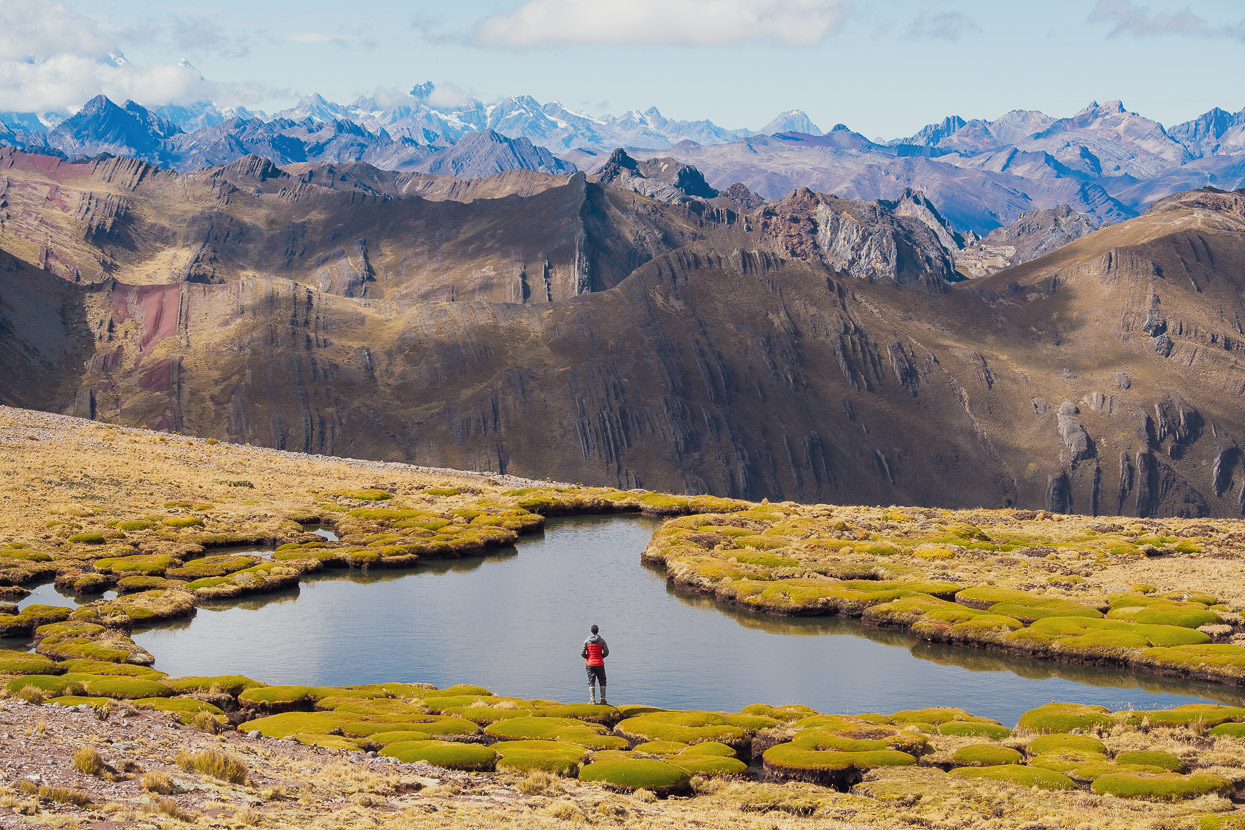
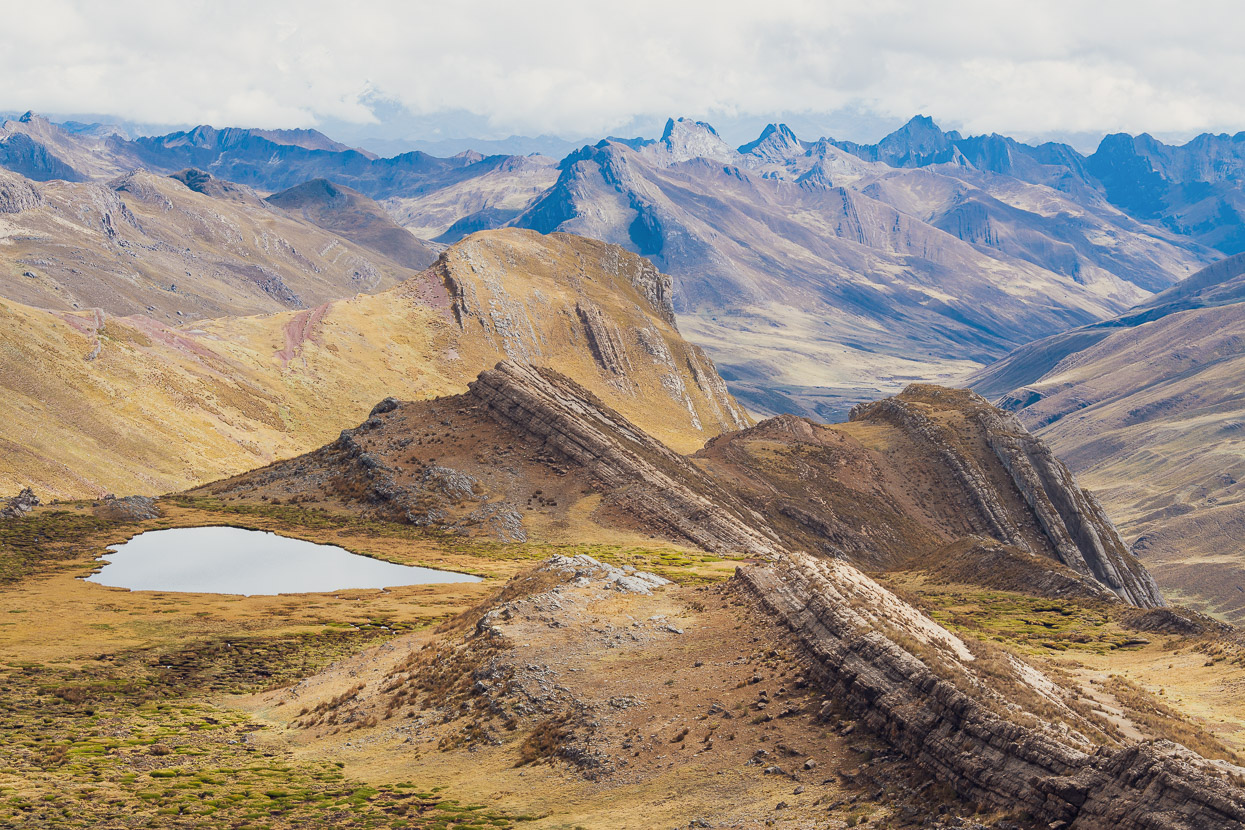
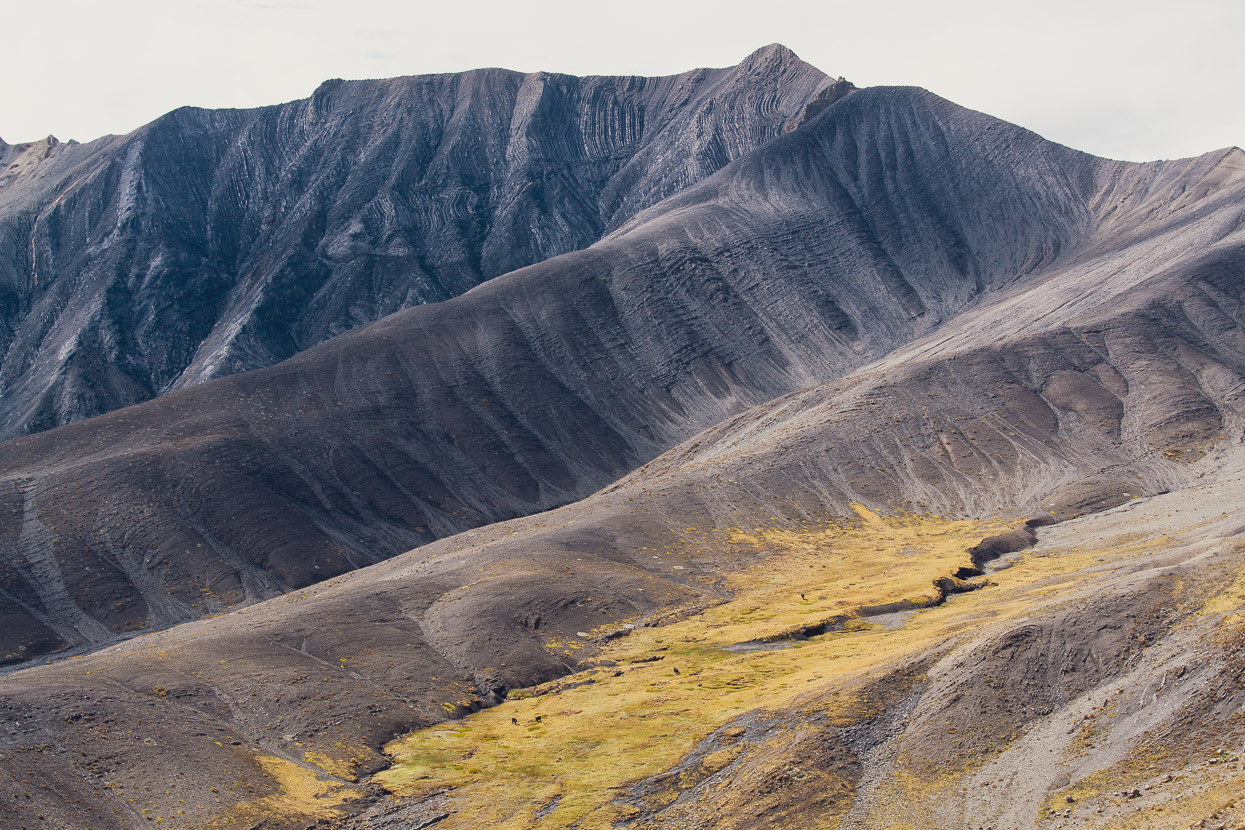
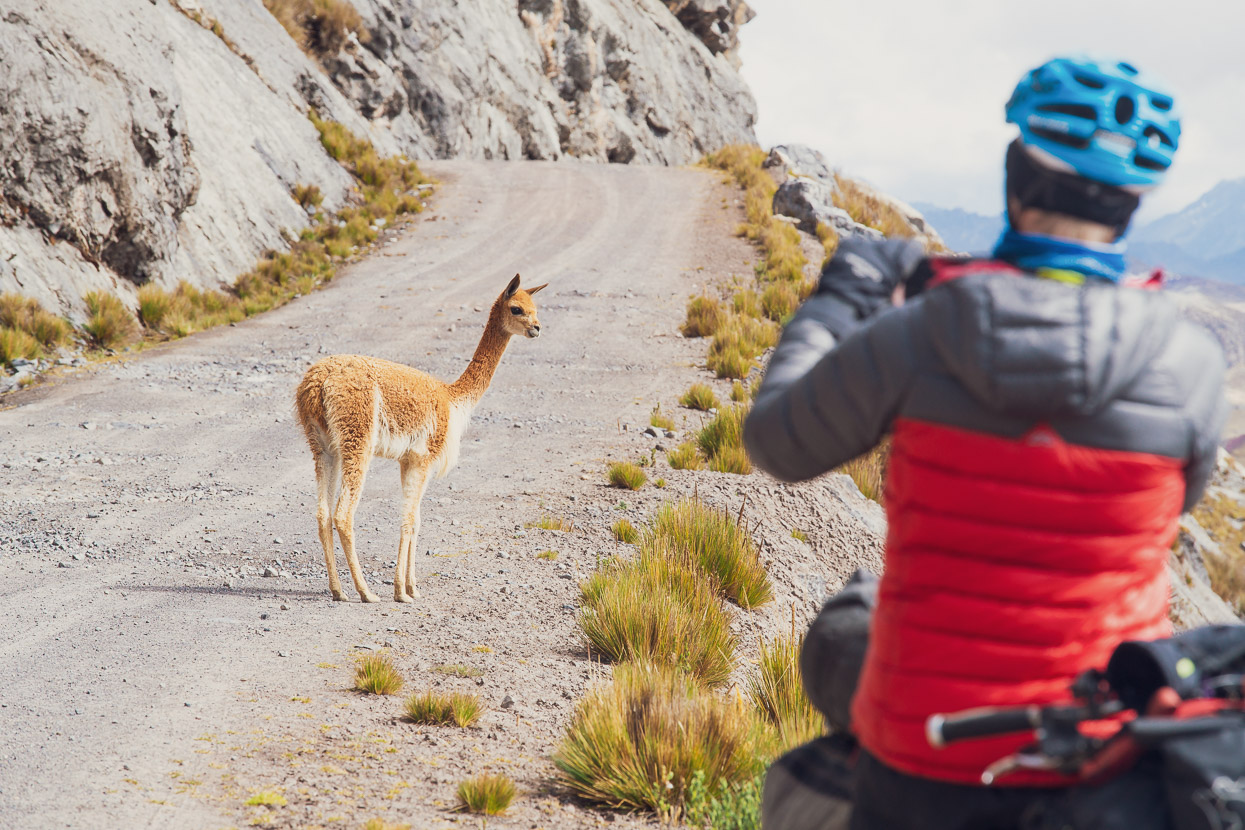
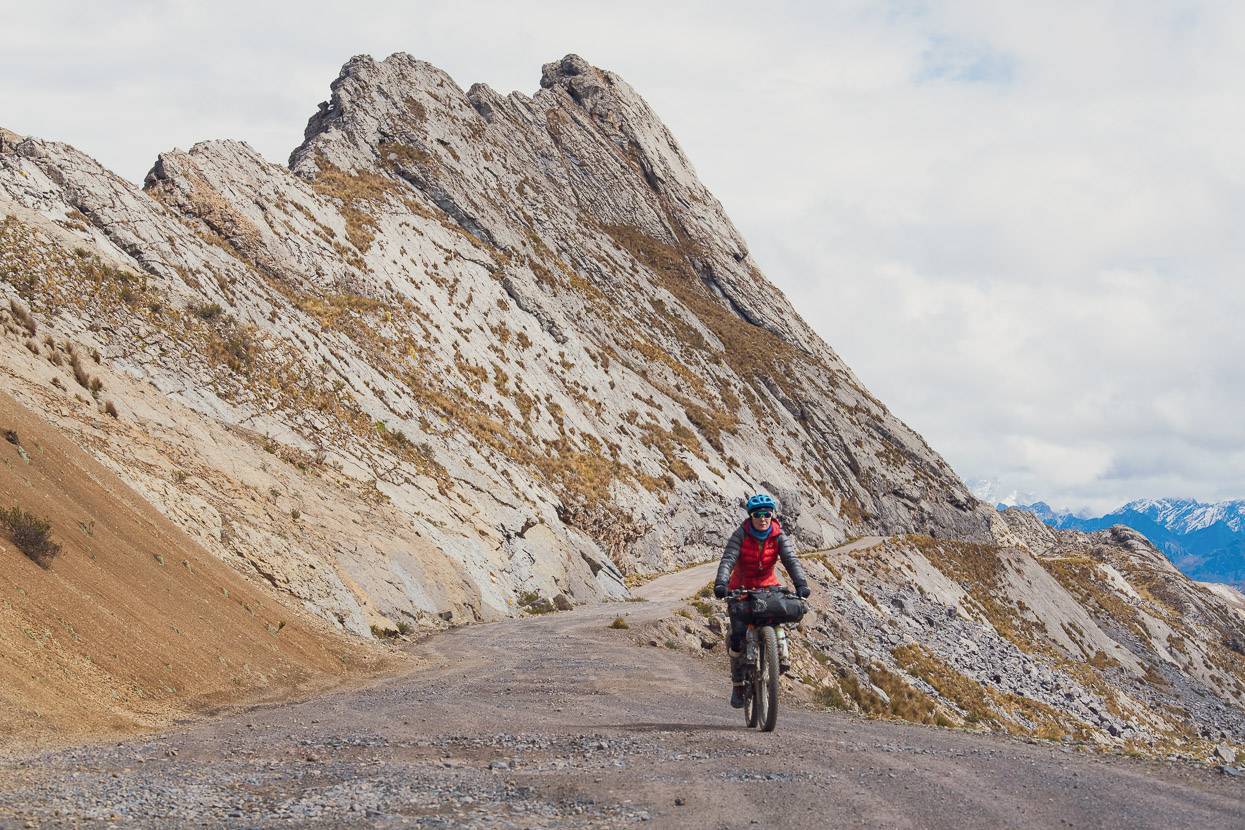
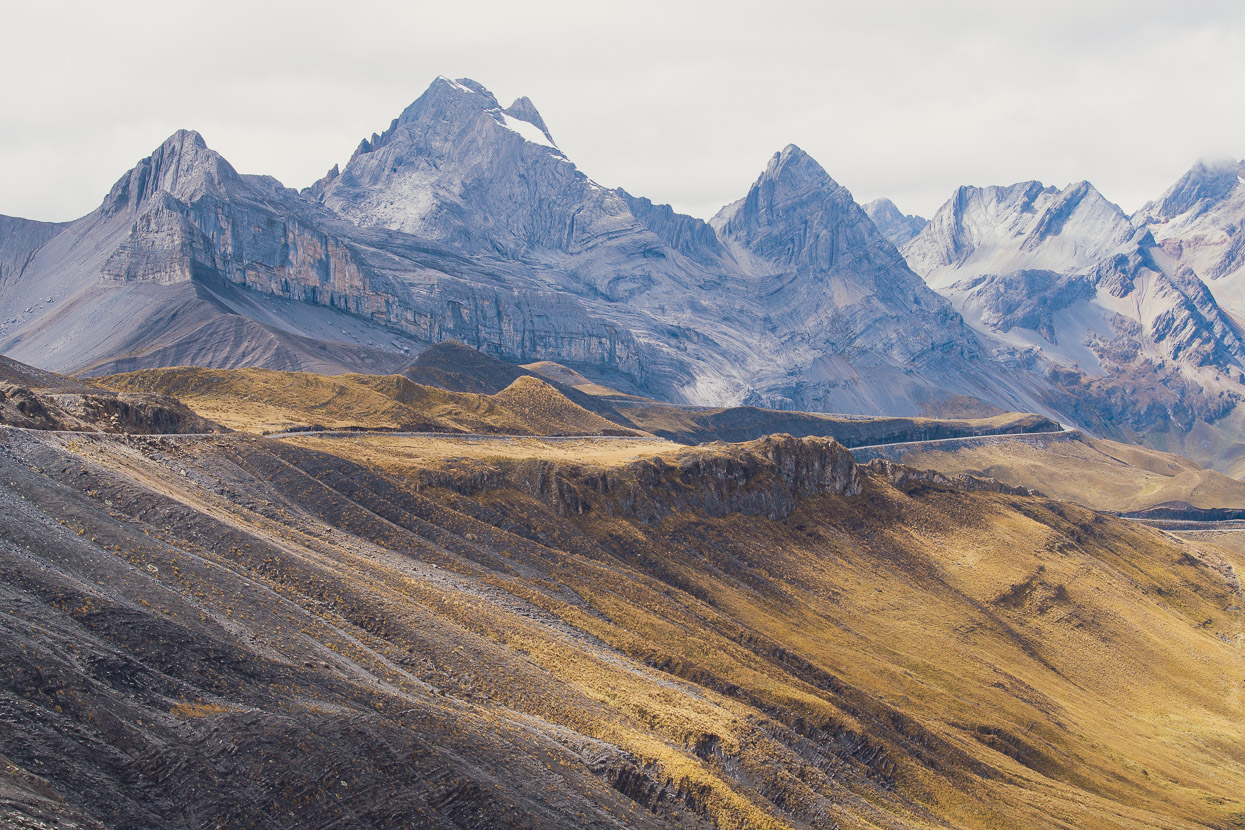
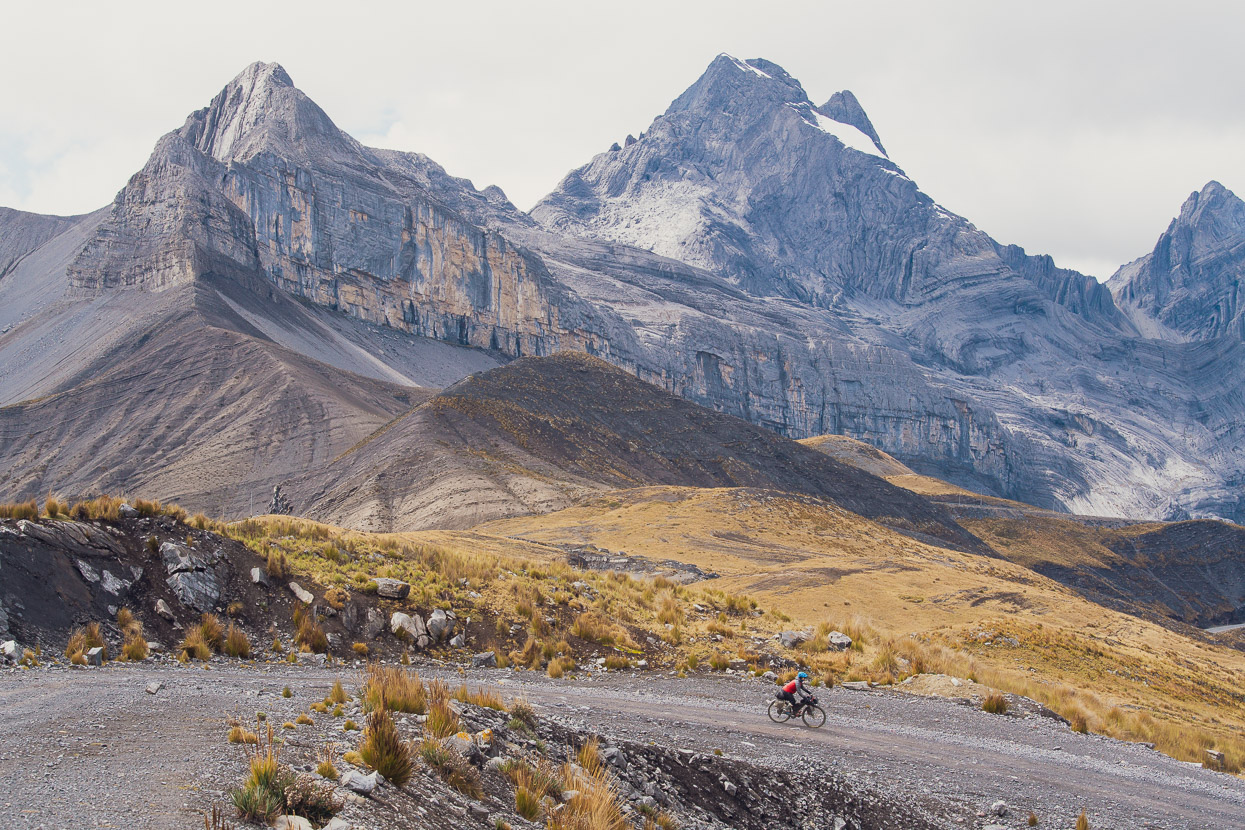





Phew ! That was a long 3 weeks , missed your blogs so much. – so you’ve become a film star ? Will look forward to reading all about it. Hope you got HOLLYWOOD rates for your efforts ?! Nothing surprises me ! What spectacular scenery. Feel sure
you’ve garnered a new set of adjectives to convey the beauty ? Surprised those Glacier fed lakes aren’t our lovely Tekapo Turquoise ? The bottom half of those Puya plants are not unlike our cabbage trees. I’ve had a form of Azorella growing in my garden – a mat forming prickly plant of no beauty. By the way – are they stones Hannah has on the back of her bike ?? Is that to stop her speeding ?!! Keep up the good work. & stay safe. Absolutely absorbing reading. Hope film in English & not Spanish ? Can’t wait to read more.
Thanks Madge – we’ll try and get some more updates out… Currently have a couple of days off in another big town. We’re being joined here by two kiwi friends Anna and James. Exciting to have company for next three weeks!
Ayacucho – I think that was the base for the Sendero Luminoso when we were in Peru in 1988
Yep – that’s the place. Quiet on the Shining Path front now – although apparently they do still exist. Apparently you should never refer to a track as a ‘sendero’ here as the connotation is still too powerful in peoples’ memories.
Yes, It was